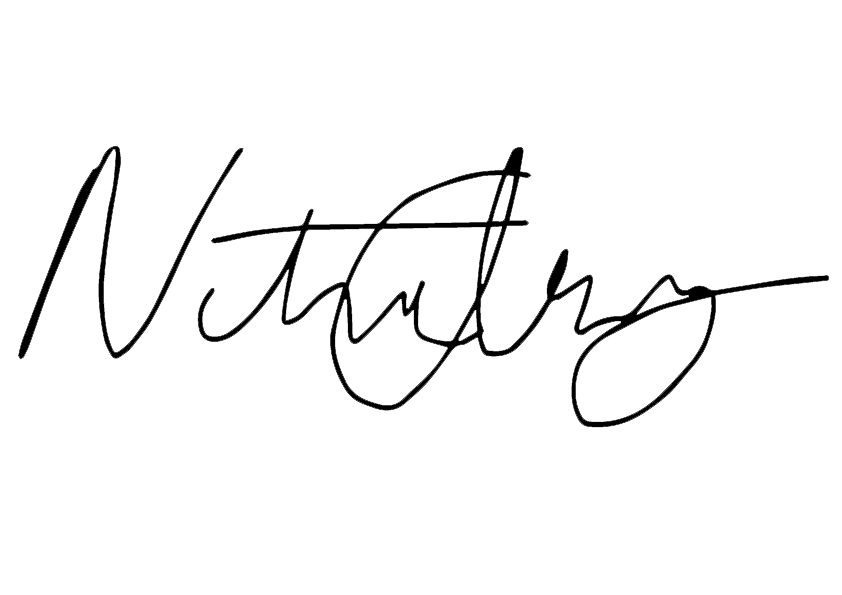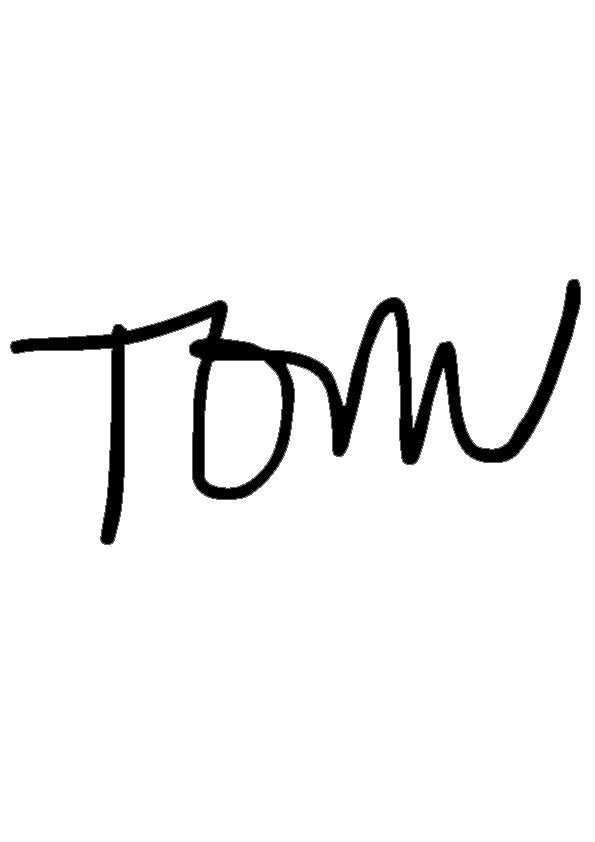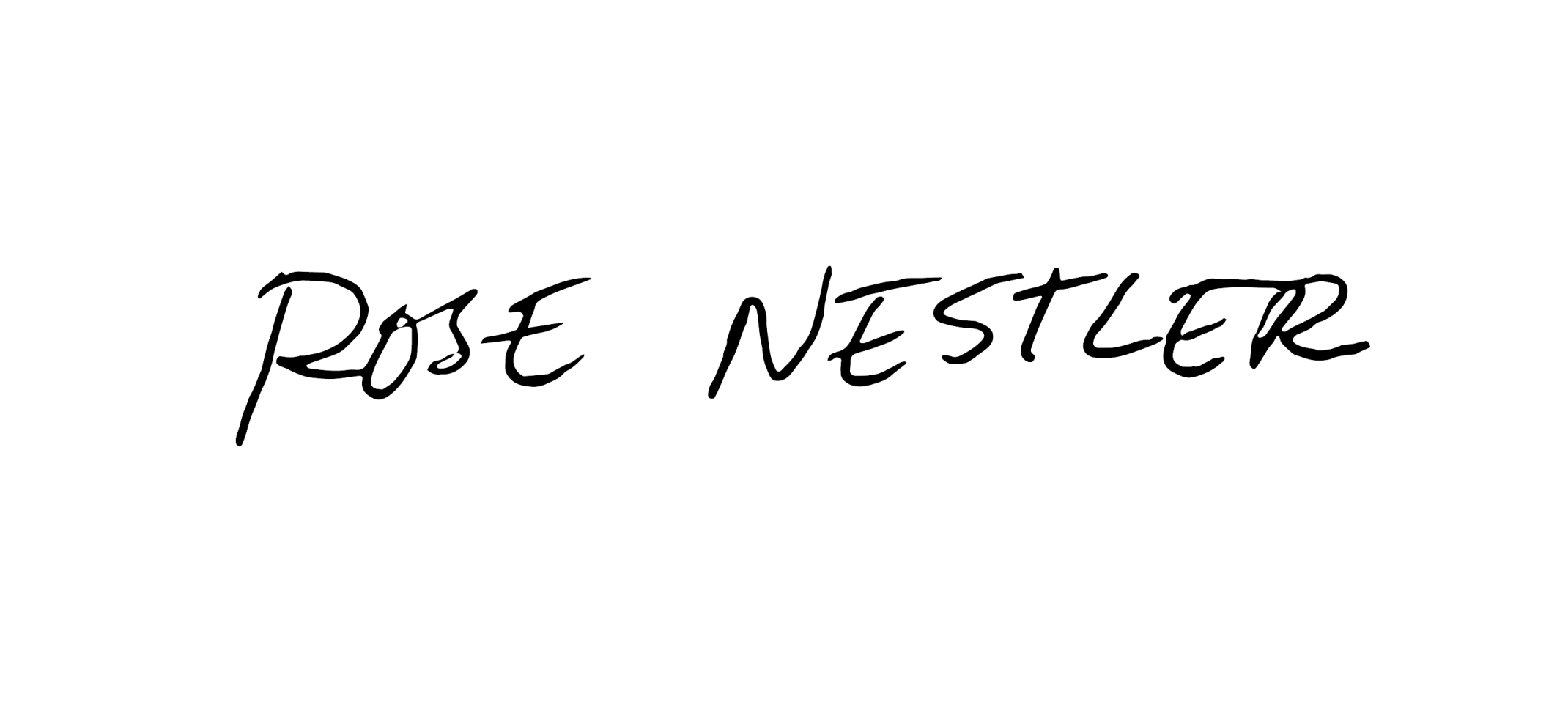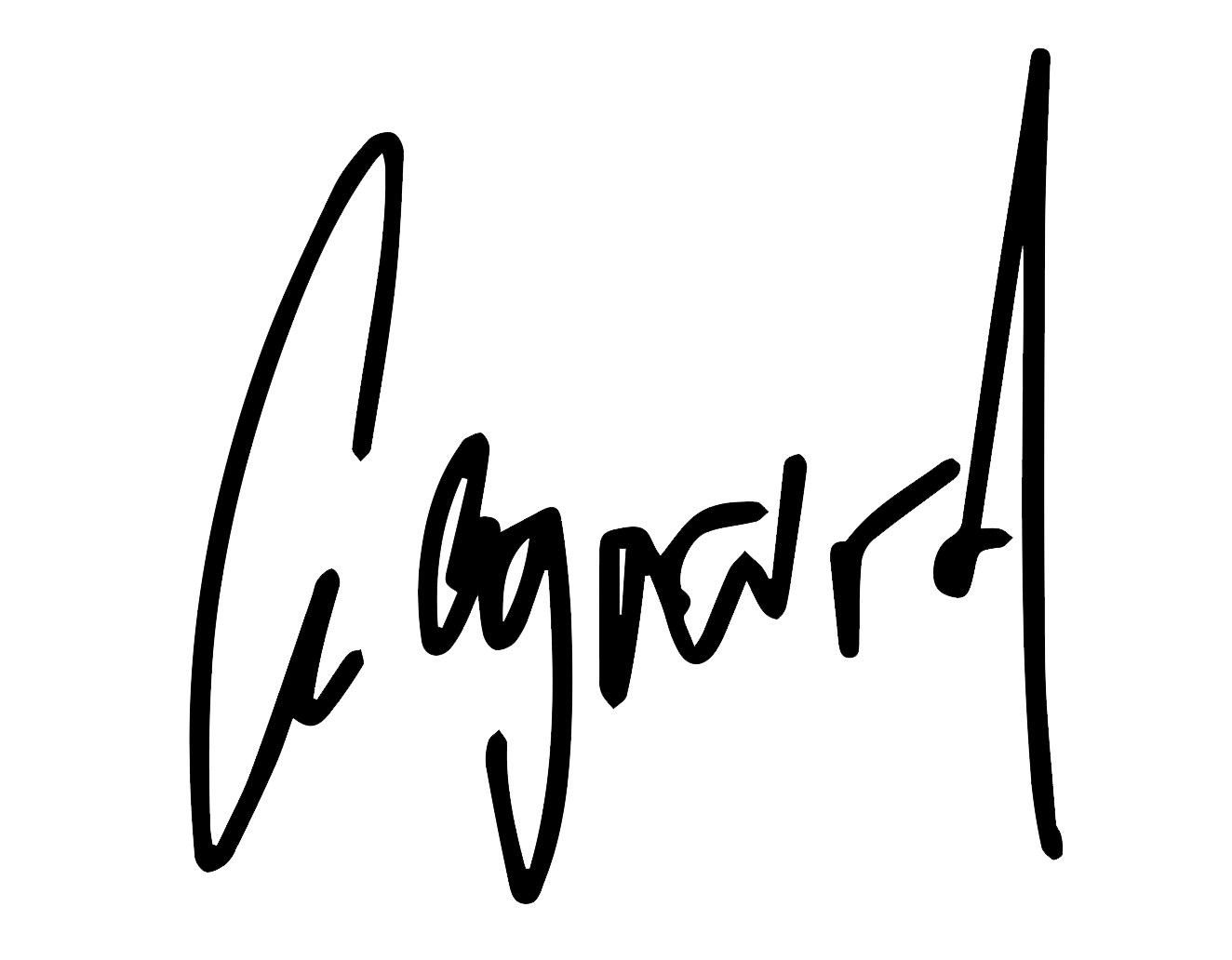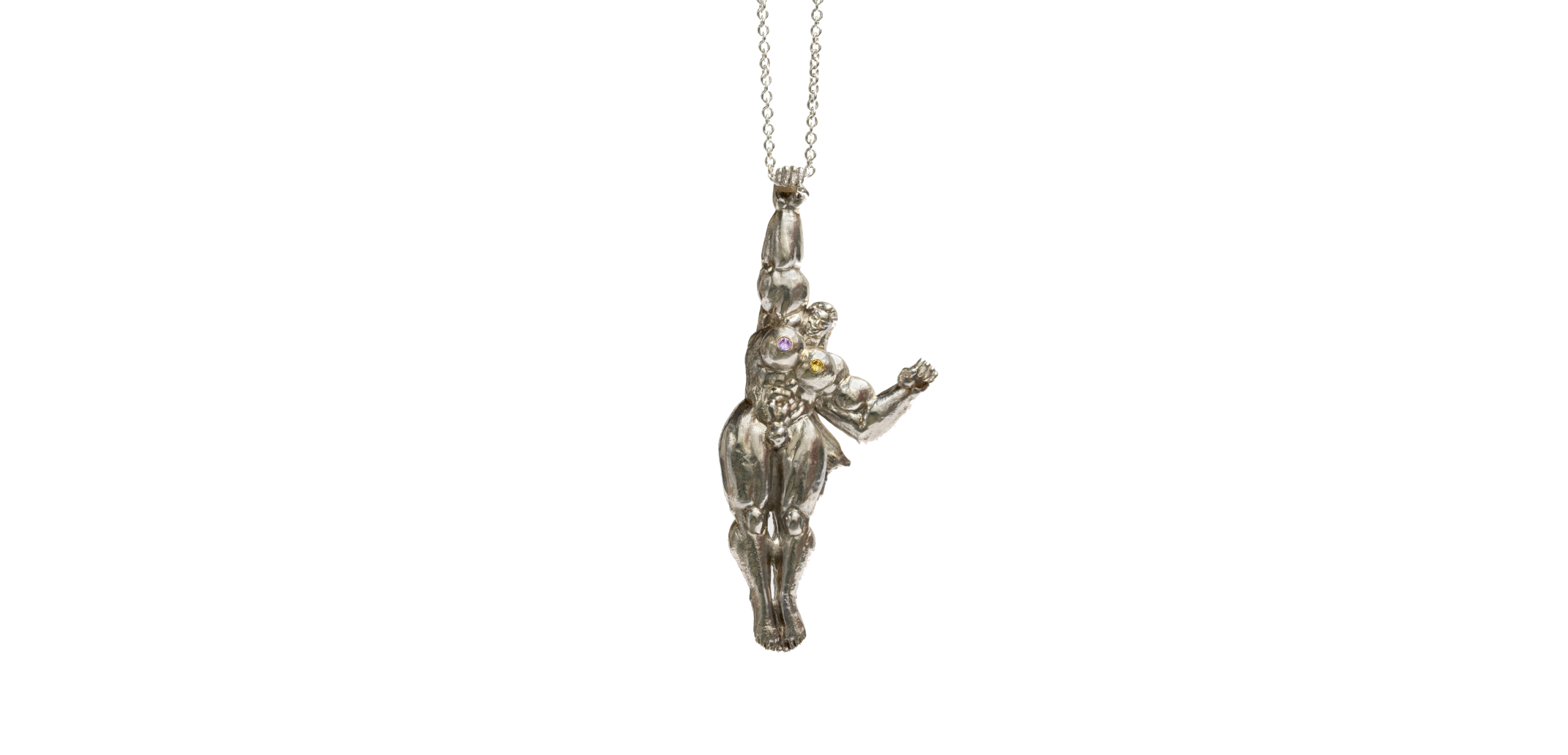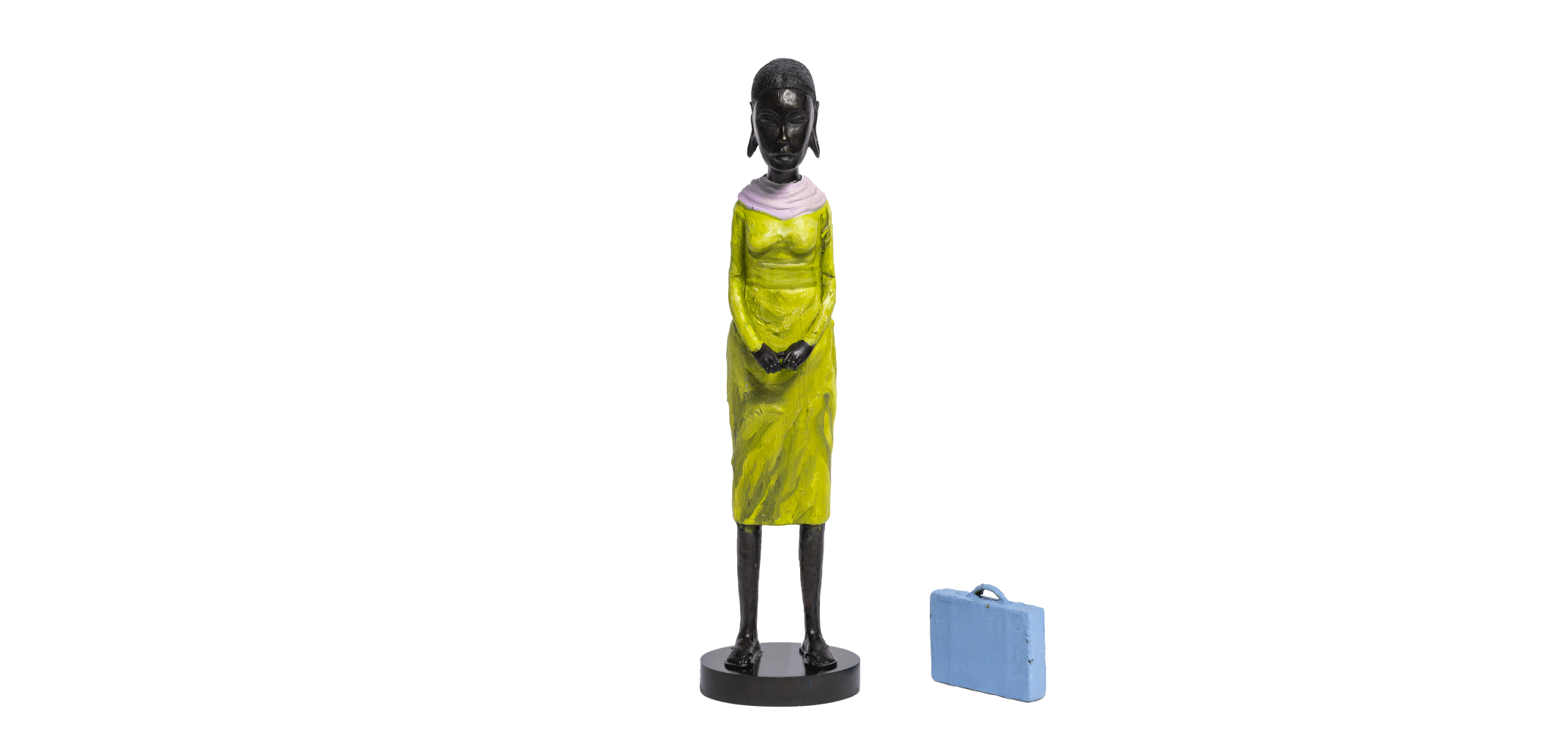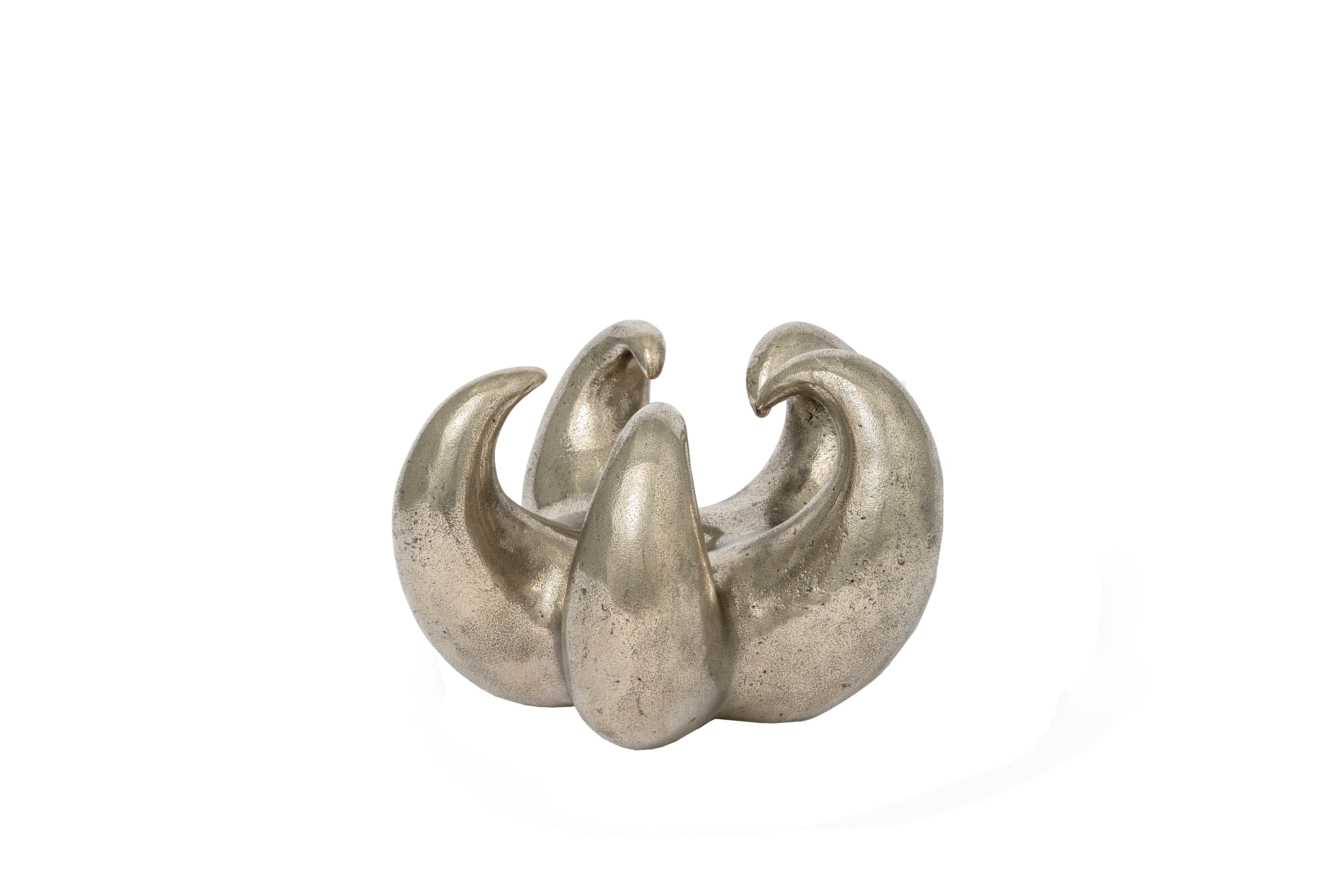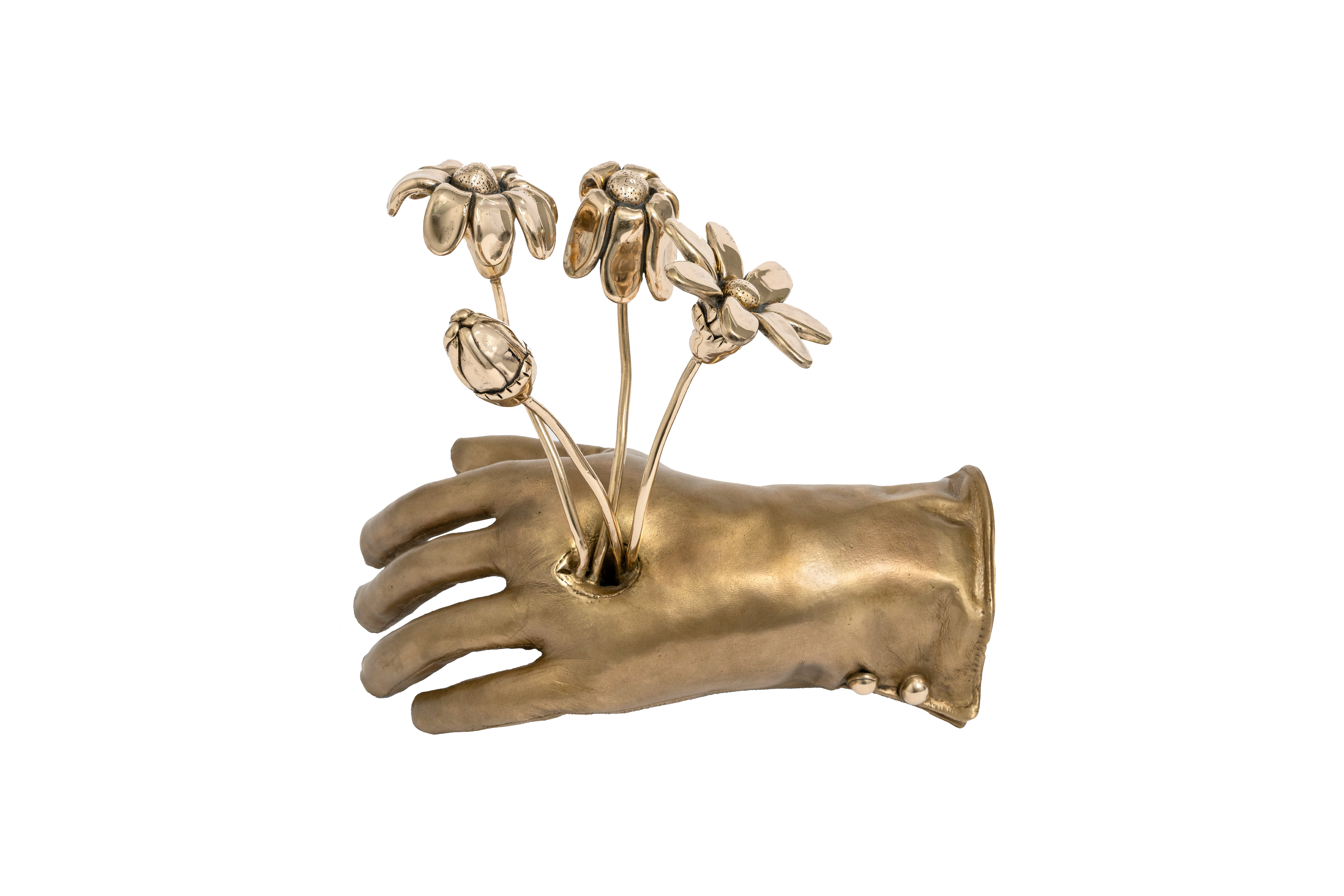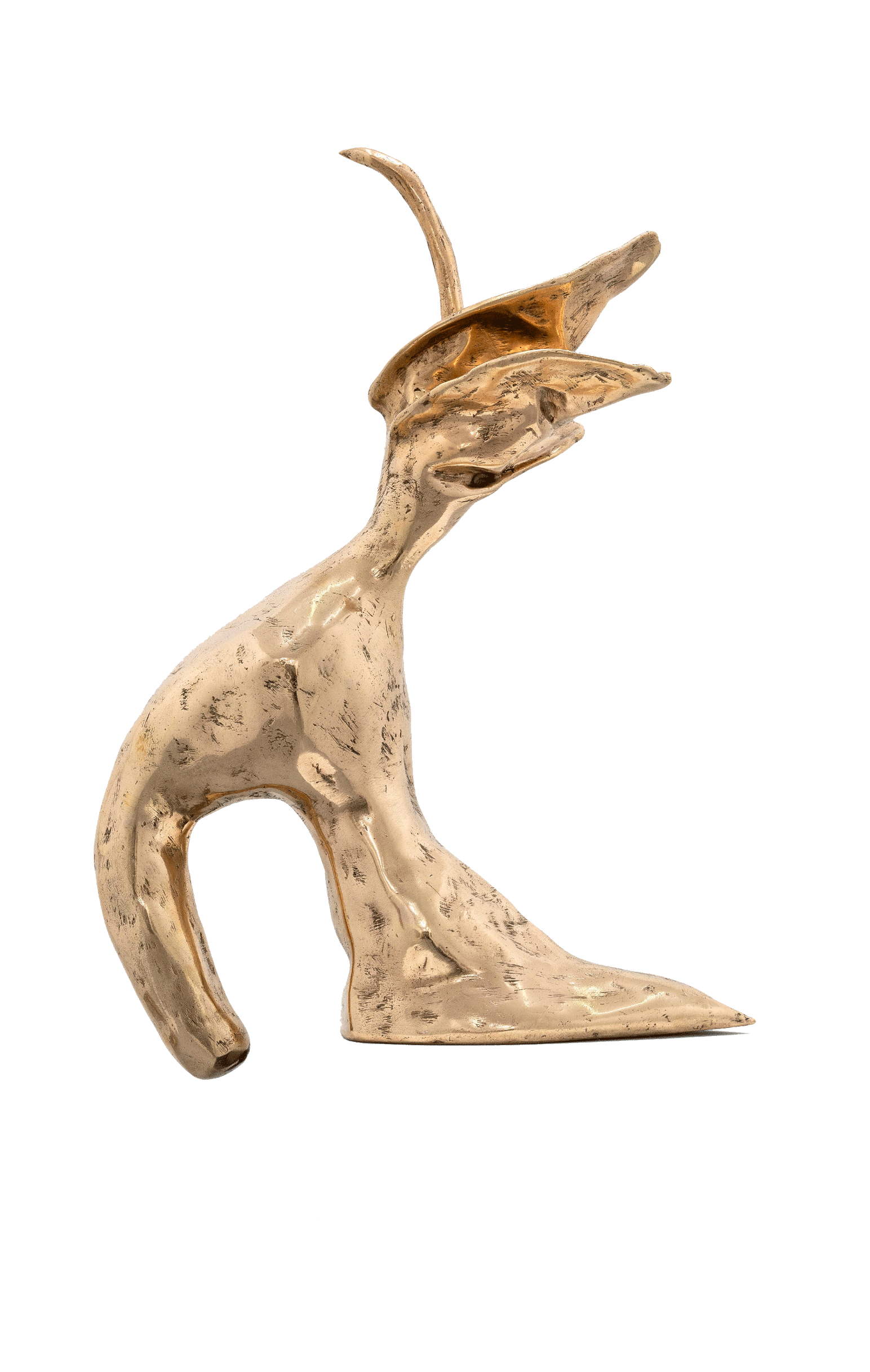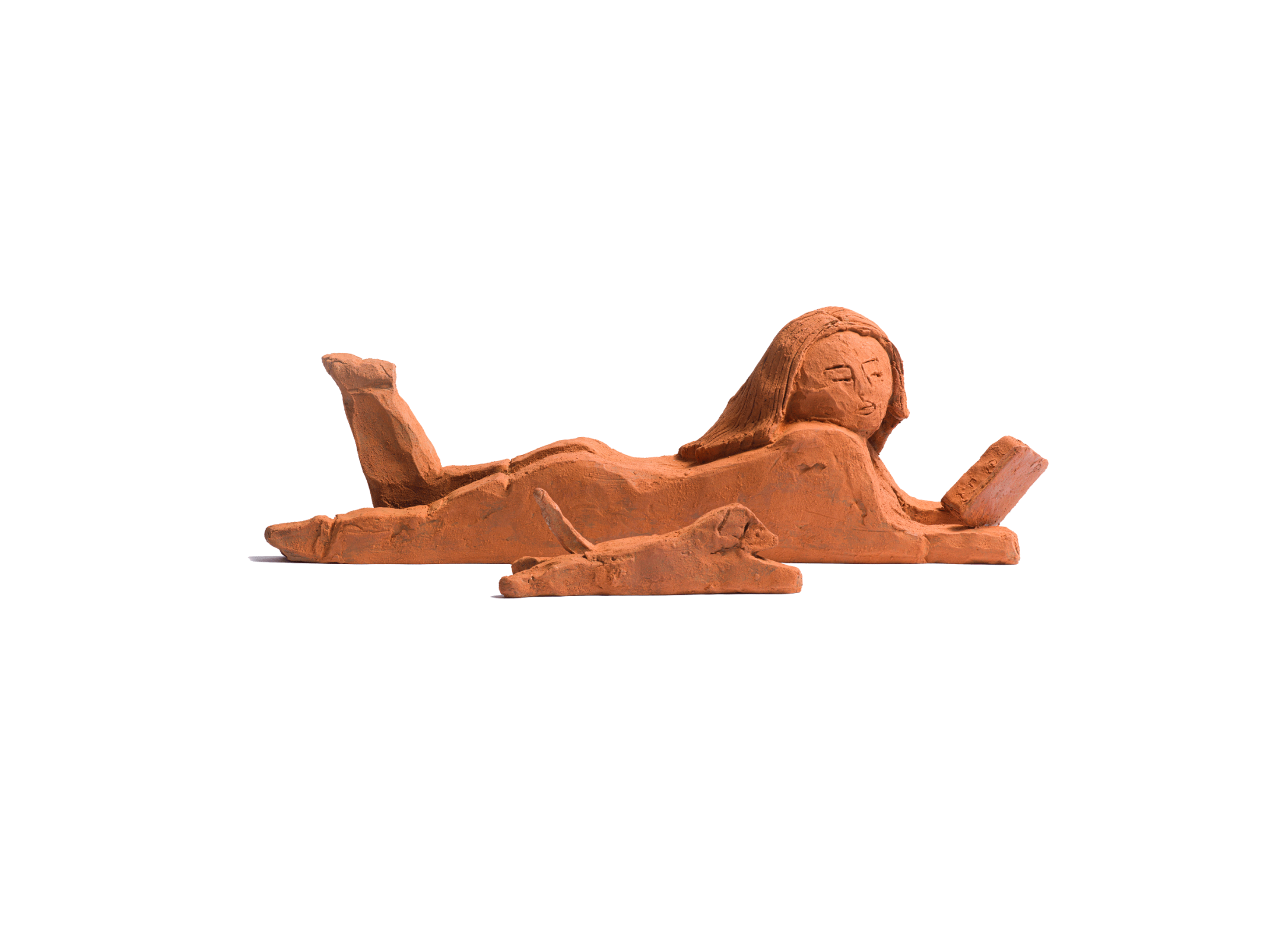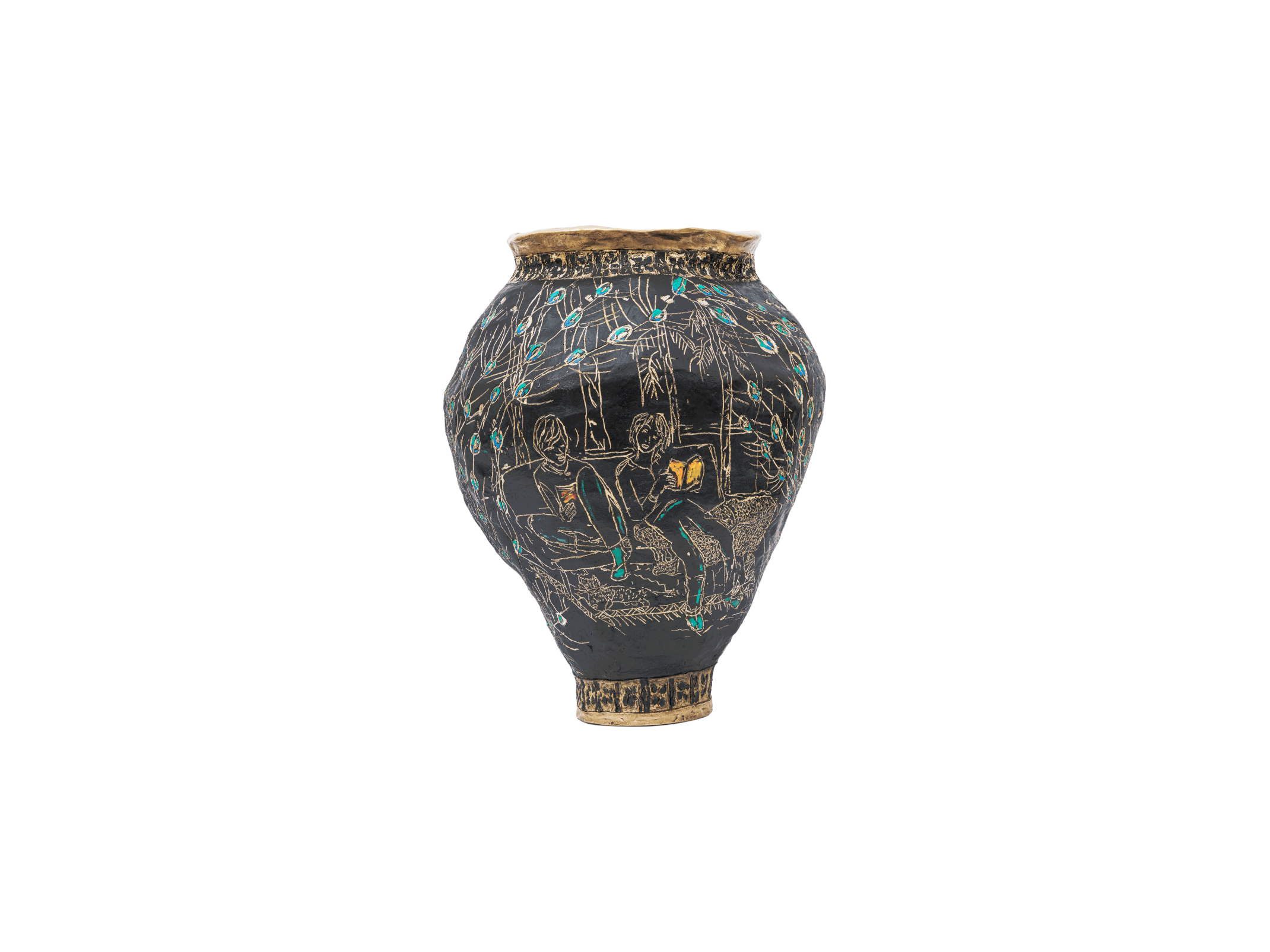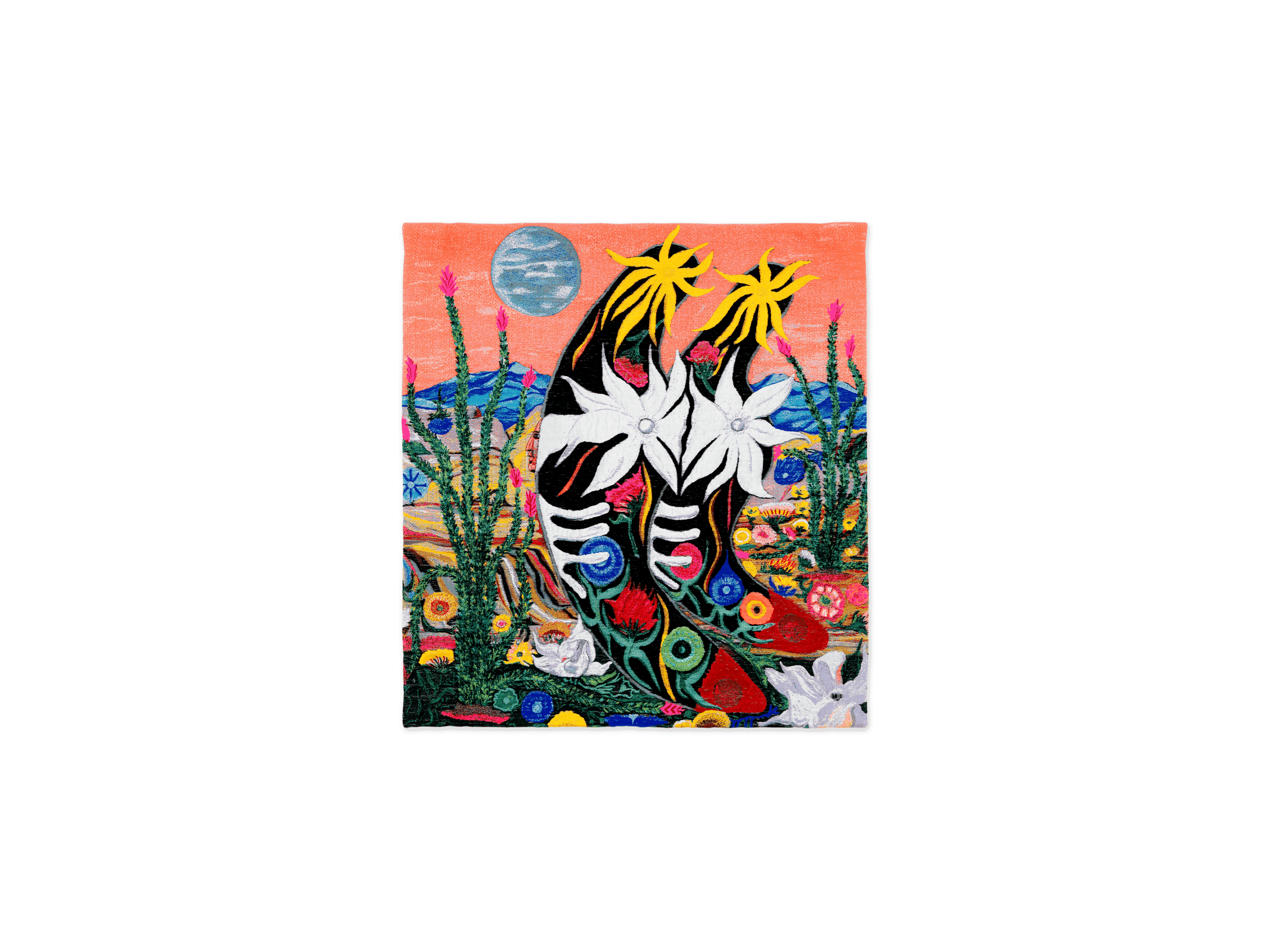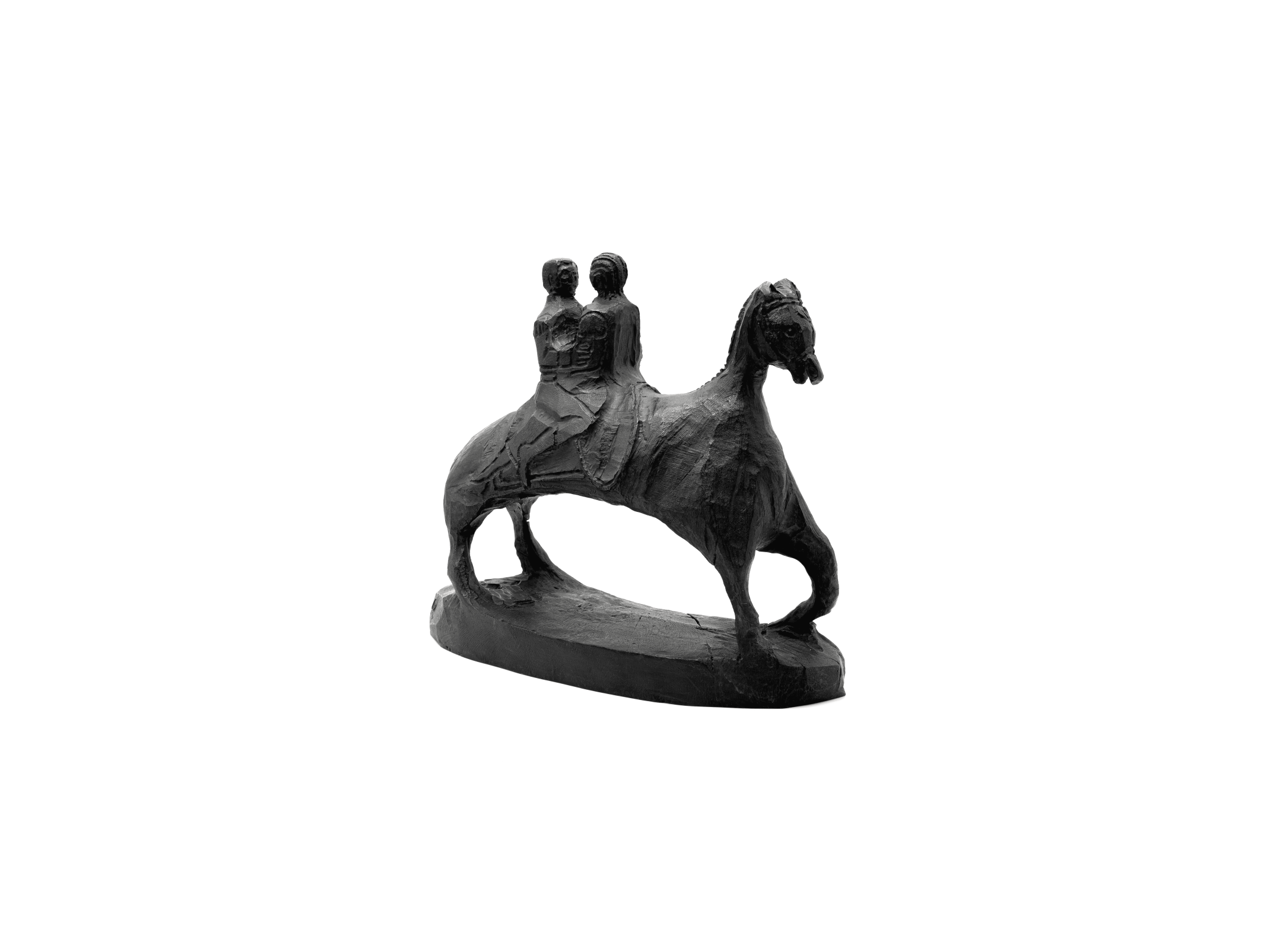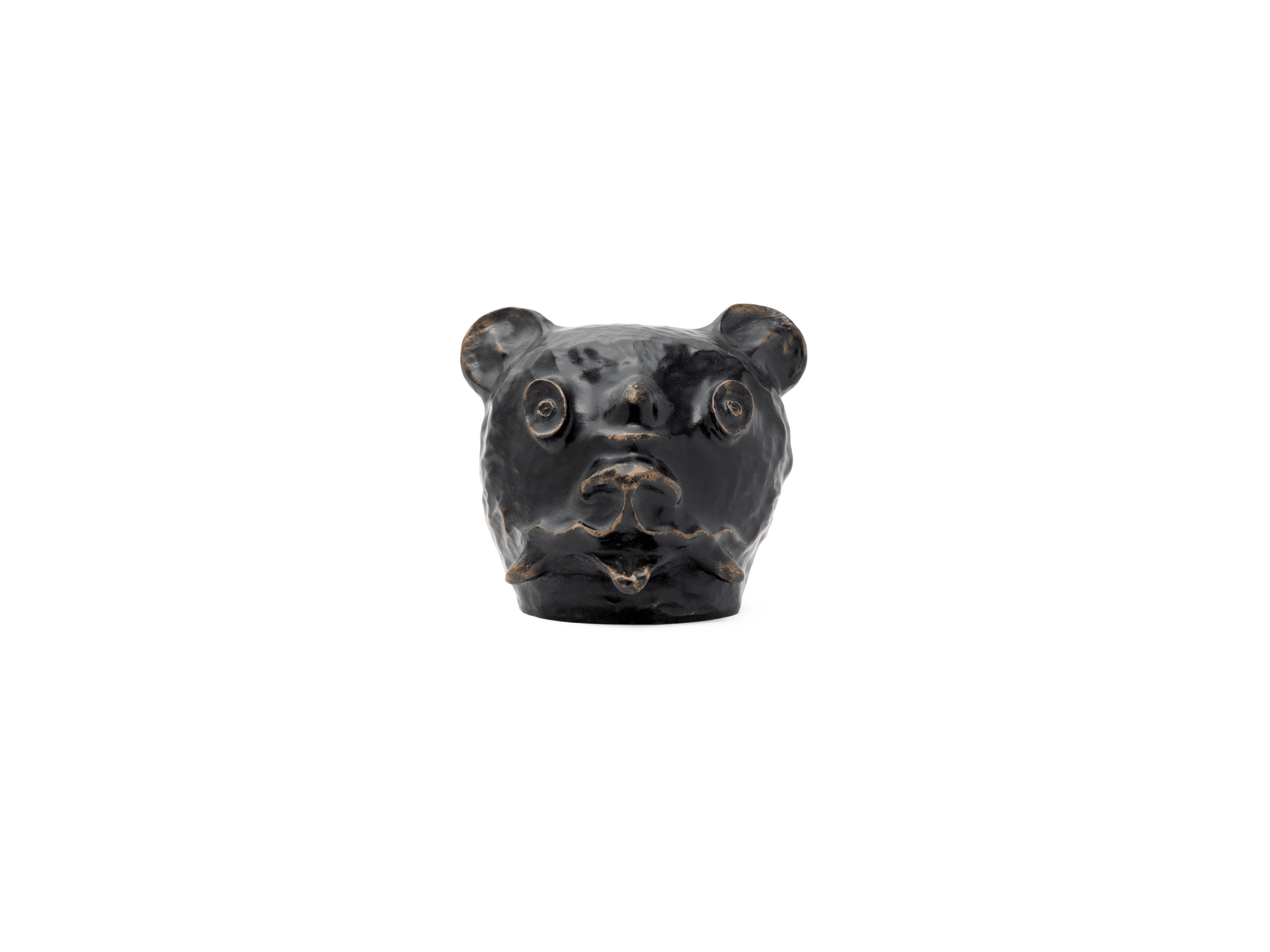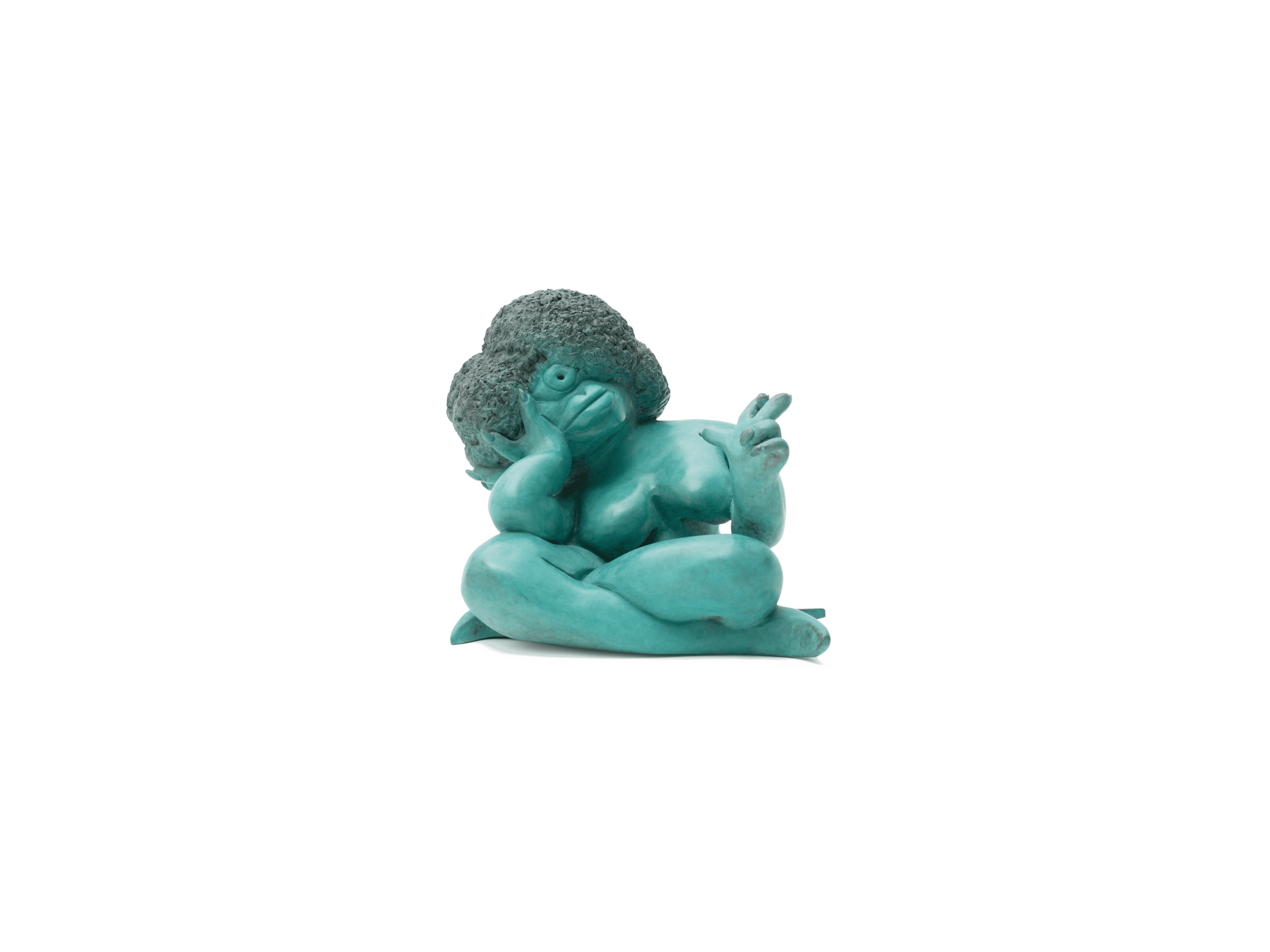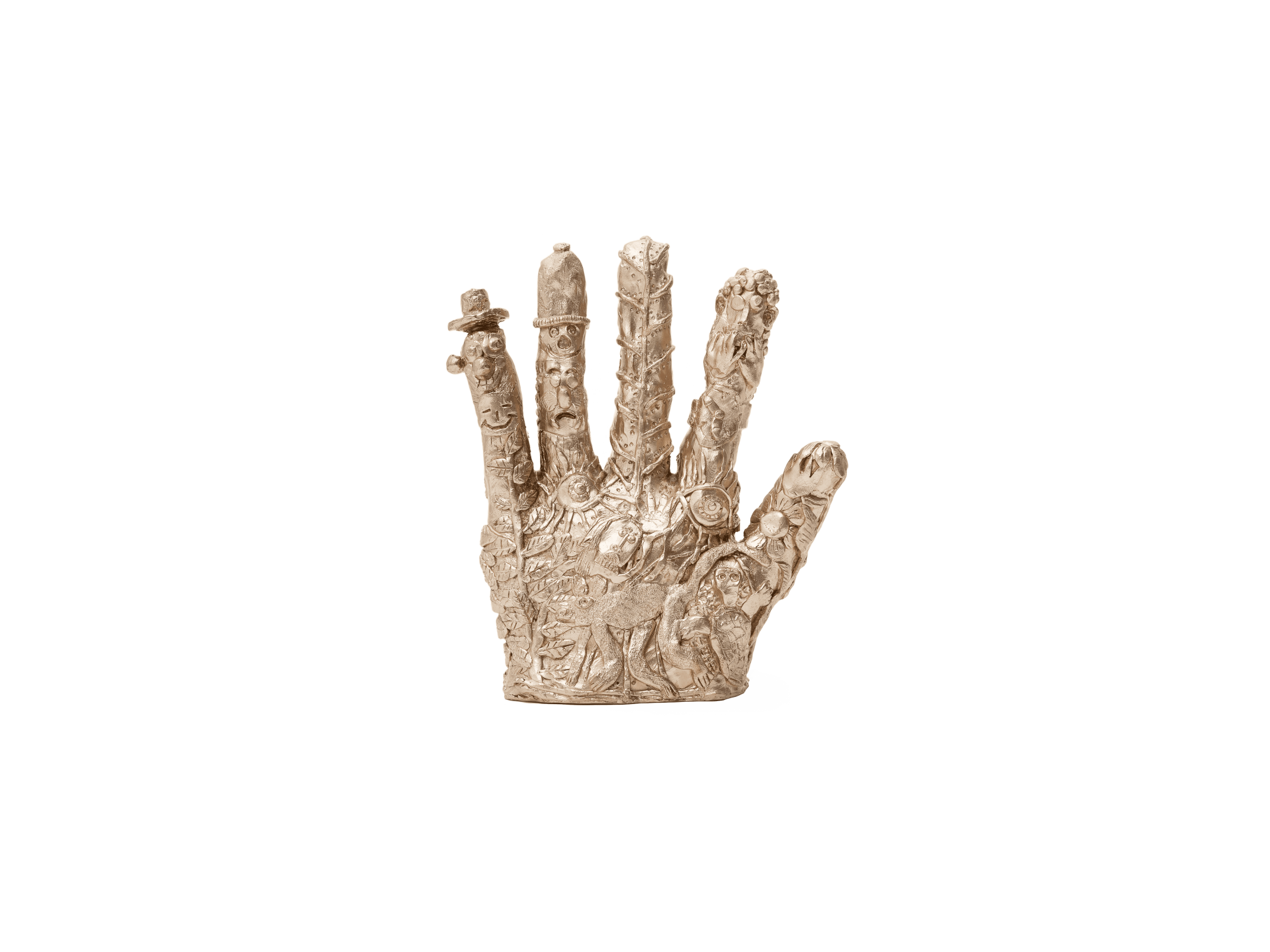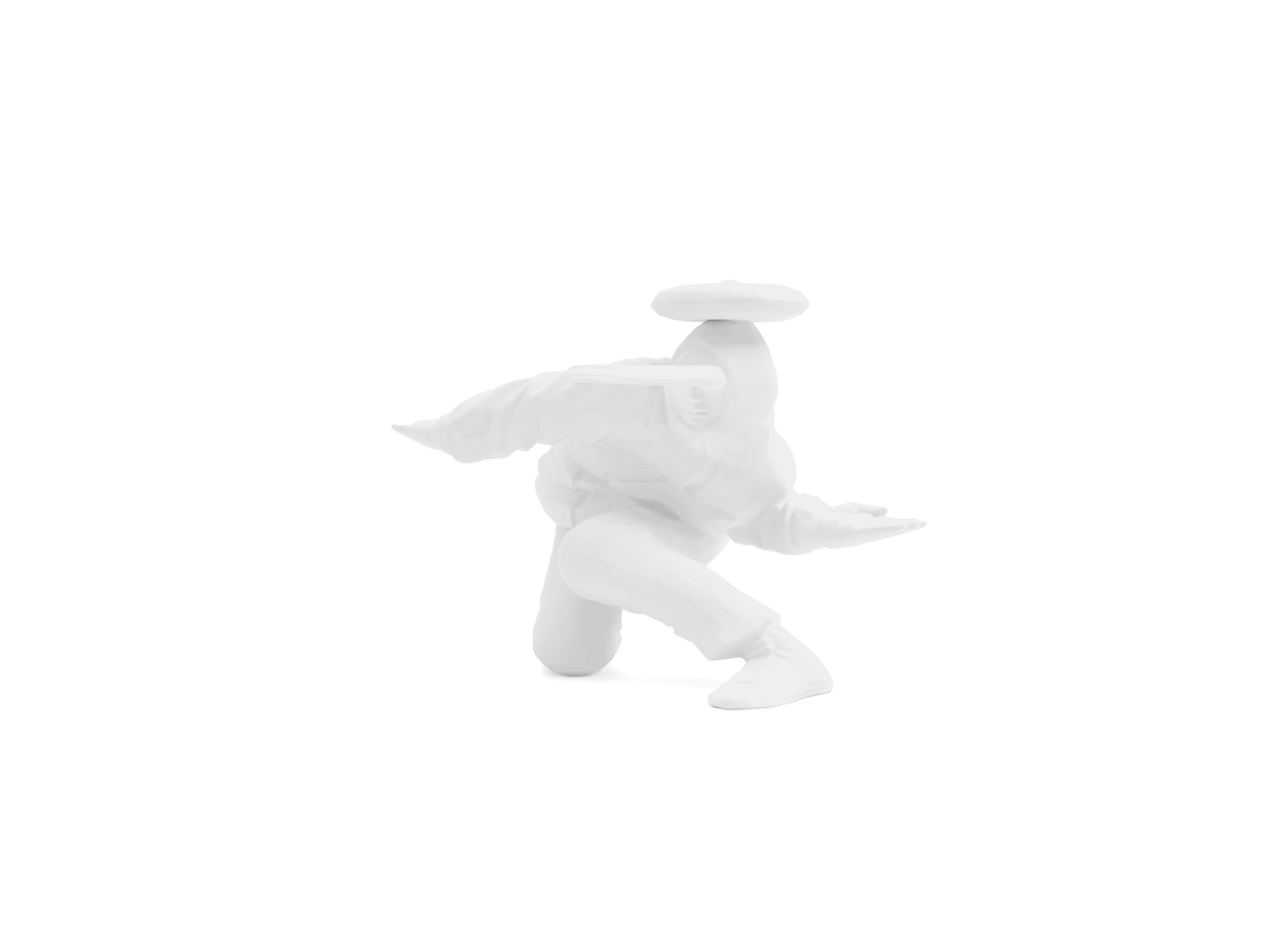Kazuma Koike is a japanese sculptor and painter. Born in 1980 in Chigasaki, he grew up between Japan, Spain and Argentina. Influenced by this strong uprooting, being a stranger at a young age forged his imagination. Kazuma Koike disorients the observer of his work and makes wonder about the origin and timing of his achievements. In seeking to confuse the essence of his work, he is strongly interested in the falsification or misinterpretation that unintentionally changes the purpose and meaning of things. Black clay and glaze leave no doubt about Koike attachment to traditional Japanese craftsmanship, but the origin of these subjects is more difficult to define: mythology, ancient gods, self-portraiture or internet meme. Koike is interested in hybridization and crossbreeding, a likely legacy of Shinbutsu-Shugo, reconciliation of Buddhism and Shintoism: between acceptance and syncretism. Koike says his interests are “the state where different elements coexist in harmony”.
-
2023
“Djordje Ozbolt and Kazuma Koike“, with Djordje Ozbolt, Aishonanzuka, Hong Kong
-
2023
“Prayer”, Galerie Julien Cadet, Paris, France
-
2022
“Koishi-Kei”, with Toru Ishii, Sokyo Gallery, Kyoto, Japan
-
2021
“Cama”, Shuhei Yamada, Mitsukoshi Contemporary Gallery, Tokyo, Japan
-
2021
Omuro Museum, Mie, Japan
-
2020
Tezukayama Gallery, Osaka, Japan
-
2019
Aishonanzuka, Hong Kong, China
-
2017
“Buddha Blues”, Tezukayama Gallery, Osaka, Japan
-
2016
“In a Thicket”, A&D Gallery, Nihon University College of Art, Tokyo, Japan
-
2016
“Volta 12”, Markthalle Basel, Tezukayama Gallery, Basel, Switzerland
-
2016
“Volta NY”, PIER 90, Tezukayama Gallery, New York, United States
-
2016
“Eclipse”, Aishonanzuka, Hong Kong, China
-
2014
“Neutral Palm Square”, Tezukayama Gallery, Osaka, Japan
-
2013
“Hermit and Bottled Water”, Aishonanzuka, Hong Kong, China
-
2013
“Float”, Aisho Miura Arts, Tokyo, Japan
-
2012
“Hallucinations”, Aisho Miura Arts, Tokyo, Japan
-
2011
“Repetitions and Variations”, Aisho Miura Arts, Tokyo, Japan
-
2010
“The quest”, Aisho Miura Arts, Tokyo, Japan
-
2010
“Blinks”, hpgrp Gallery Tokyo, Tokyo, Japan
-
2010
“Trance”, Aisho Miura Arts, Tokyo, Japan
-
2023
“Twice upon a time”, Akrilyc, London, UK & Brussels, Belgium
-
2023
“Inception”, HAGD Contemporary, Aalborg, Denmark
-
2023
“Kuroobianaconda 05 Sukiyaki”, Aishonanzuka, Hong Kong
-
2022
“Kurobikari”, The Shophouse, Hong Kong
-
2022
“Mikado2 - My Baby Collection”, Tezukayama Gallery, Osaka, Japan
-
2022
“Kuroobianaconada 04 Tempura”, Sokyo Lisbon, Lisbon, Portugal
-
2022
“End of Eden”, Galerie Wolfsen, Aalborg, Danemark
-
2022
“Tokyo Nights Vol. 4”, Block House, Tokyo, Japan
-
2022
“Intersection”, Aishonanzuka, Hong Kong
-
2022
“Tokyo Nights Vol. 3”, Block House, Tokyo, Japan
-
2021
“Delta 2021”, Caso, Tezukayama Gallery, Osaka, Japan
-
2021
“Cama”, Mitsukoshi Contemporary Gallery, Tokyo, Japan
-
2021
“Art Collaboration Kyoto”, Kyoto International Conference Center, Tezukayama Gallery, Kyoto, Japan
-
2021
“Multiple Art Days”, Fiminco Foundation, Bomma, Romainville, France
-
2021
“Kuroobianaconda 03 Sanmaioroshi”, Tezukayama Gallery, Osaka, Japan
-
2021
“Art Osaka 2021”, Osaka City Central Public Hall, Tezukayama Gallery, Osaka, Japan
-
2021
“Mikado2”, Zuiun-an, Kyoto, Japan
-
2021
“Hello Konnichiwa”, Aishonanzuka, Hong Kong, China
-
2021
“Re: Focus vol.5”, Tezukayama Gallery, Osaka, Japan
-
2020
“Art021 Shanghai Contemporary Art Fair”, Shanghai Exhibition Center, Aishonanzuka, Shanghai, China
-
2020
“ArtTNZ”, Terrada Art Complex II, Tezukayama Gallery, Tokyo, Japan
-
2020
“Delta Experiment”, Tezukayama Gallery, Osaka, Japan
-
2020
“Kuroobianakonda 02 Wagiri”, The 5th Floor, Tokyo, Japan
-
2019
“Cama”, Vou, Kyoto, Japan
-
2018
“Re: Focus Vol. 3”, Tezukayama Gallery, Osaka, Japan
-
2017
“Enokojima Art Days 2017: Other Ways”, enoco, Osaka, Japan
-
2015
“Waxing and Waning”, hpgrp Gallery Tokyo, Tokyo, Japan
-
2013
“Gallery Show”, Aishonanzuka, Hong Kong, China
-
2012
“Hell / Summer / Landscape”, Aisho Miura Arts, Tokyo, Japan
-
2011
“Group Show 2”, Aisho Miura Arts, Tokyo, Japan
-
2010
“Group Show 1”, Aisho Miura Arts, Tokyo, Japan
-
2010
“A silent moment at Veronica island”, hpgrp Gallery Tokyo, Tokyo, Japan
-
2010
“The 5th Daikokuya Contemporary Art Award Exhibition”, Daikokuya, Tochigi, Japan
-
2010
“No Man’s Land”, French embassy, Tokyo, Japan
-
2009
“Showcase”, Aisho Miura Arts, Tokyo, Japan
-
2008
“Japan Now”, Inter Alia Art Company, Seoul, Korea
-
2007
“Casino Royale”, Scai The Bathhouse, Tokyo, Japan
-
2021
“BZ210827”, Bronze sculpture, Bomma, France
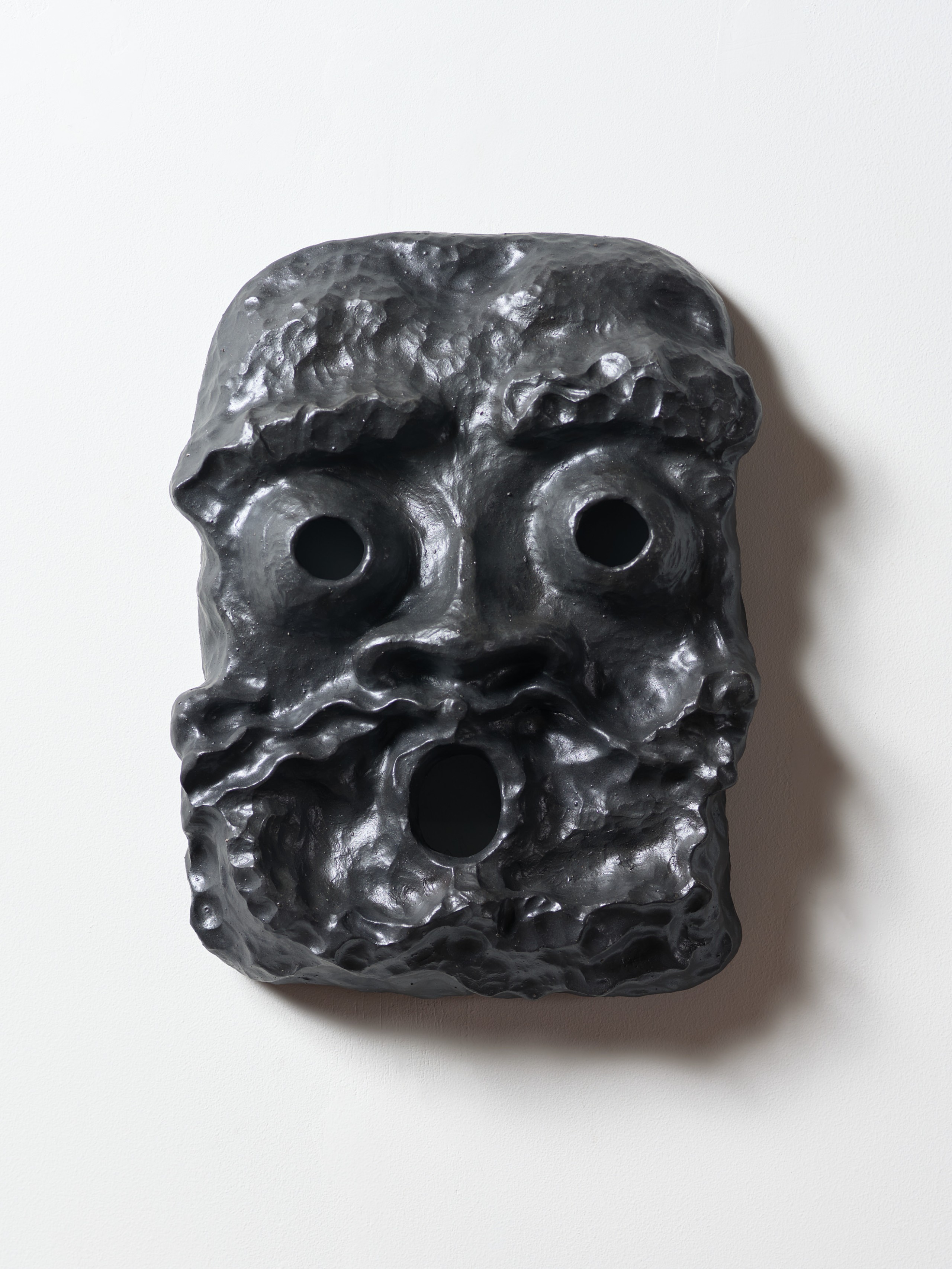
BC201222, 2020, ceramic, 37 × 28 × 10,5 cm (relief), ceramic sculptures and installation views at Omuro Museum. Photo credits: Hayato Wakabayashi, courtesy of Kazuma Koike
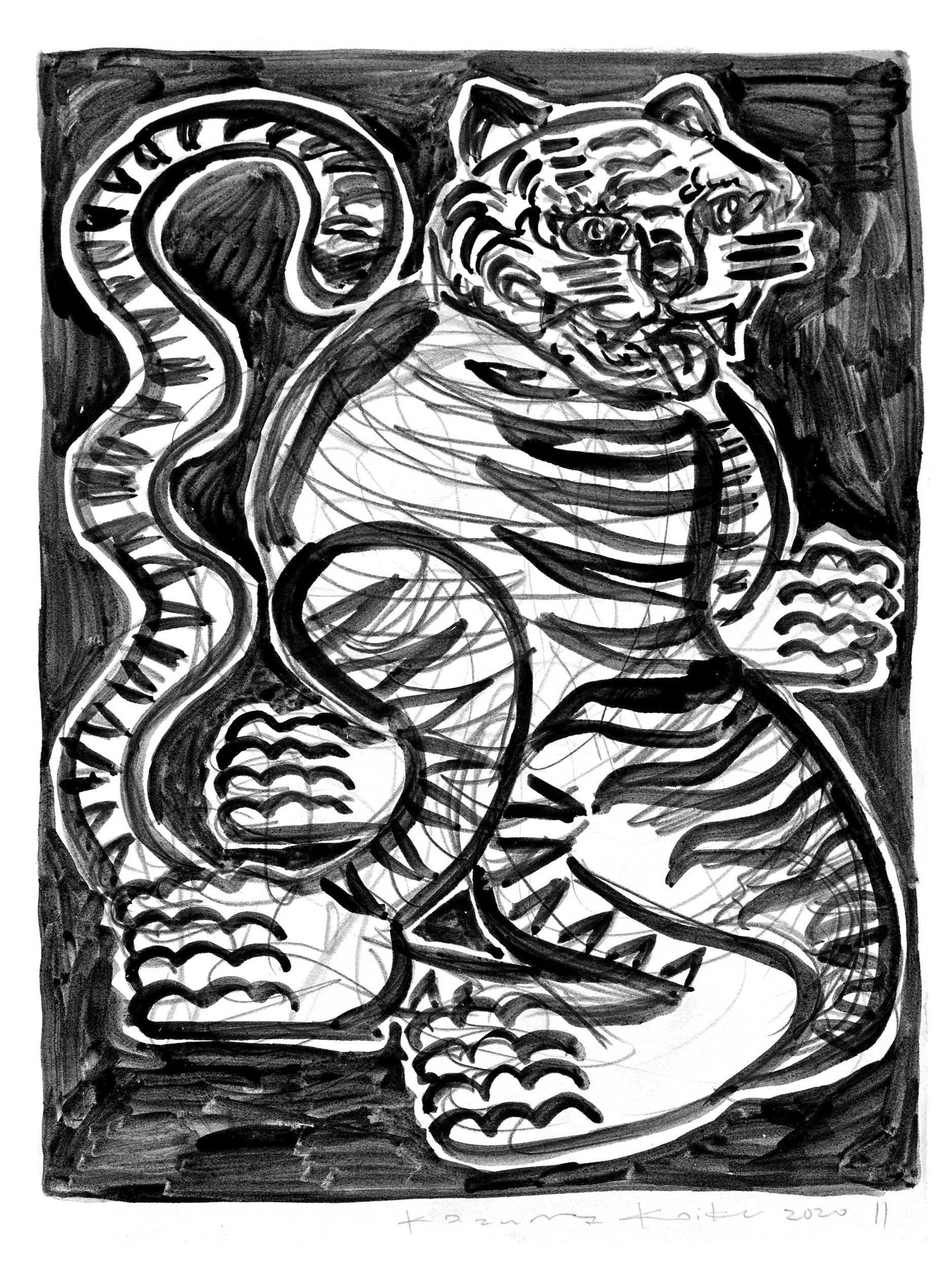
Untitled, 2020, water color and pencil on paper, 25,1 × 17,8 cm, courtesy Kazuma Koike
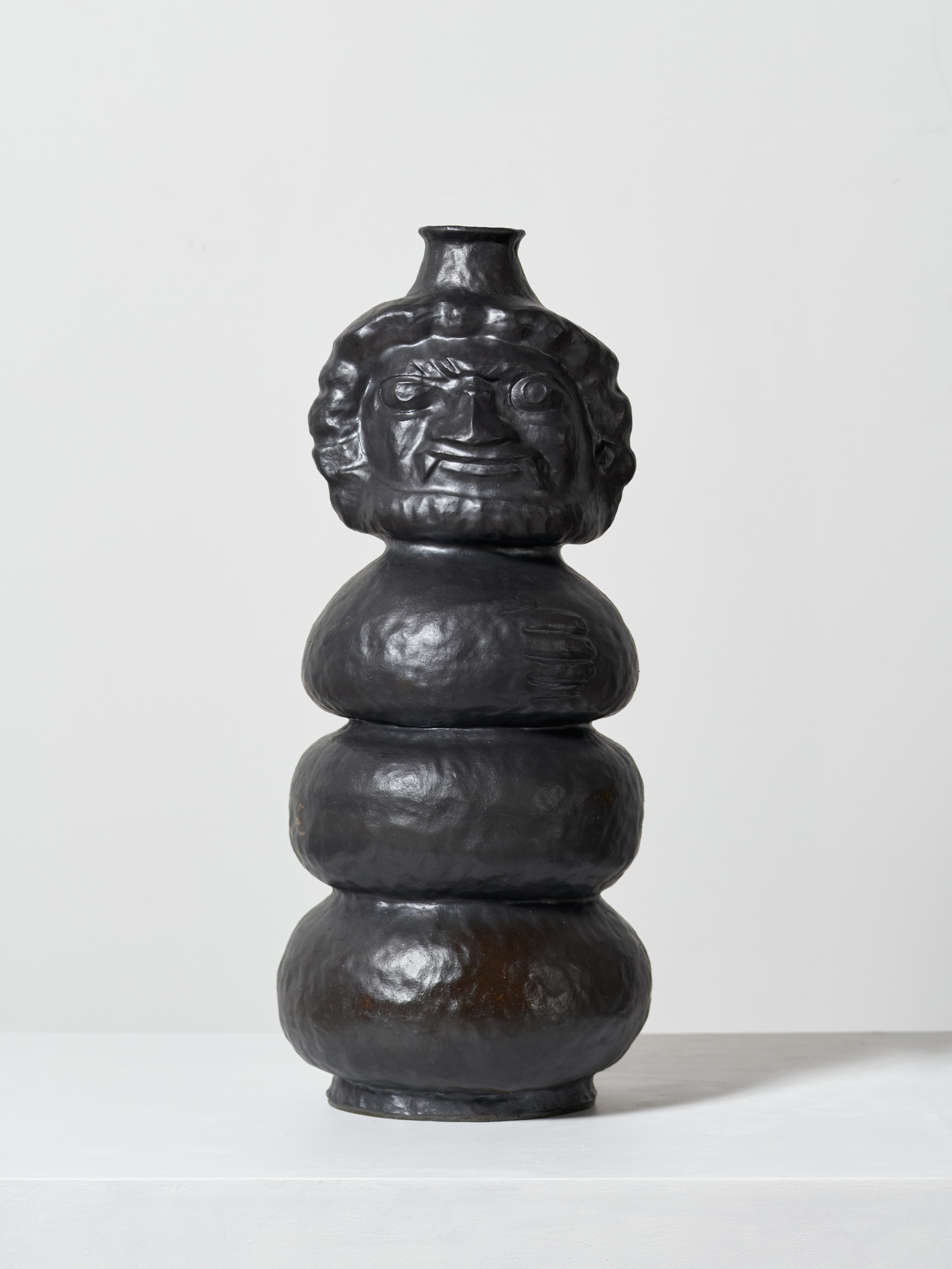
BC200513, 2020, ceramic, 57 × 25 × 25 cm, ceramic sculptures and installation views at Omuro Museum, photo credits: Hayato Wakabayashi, courtesy of Kazuma Koike
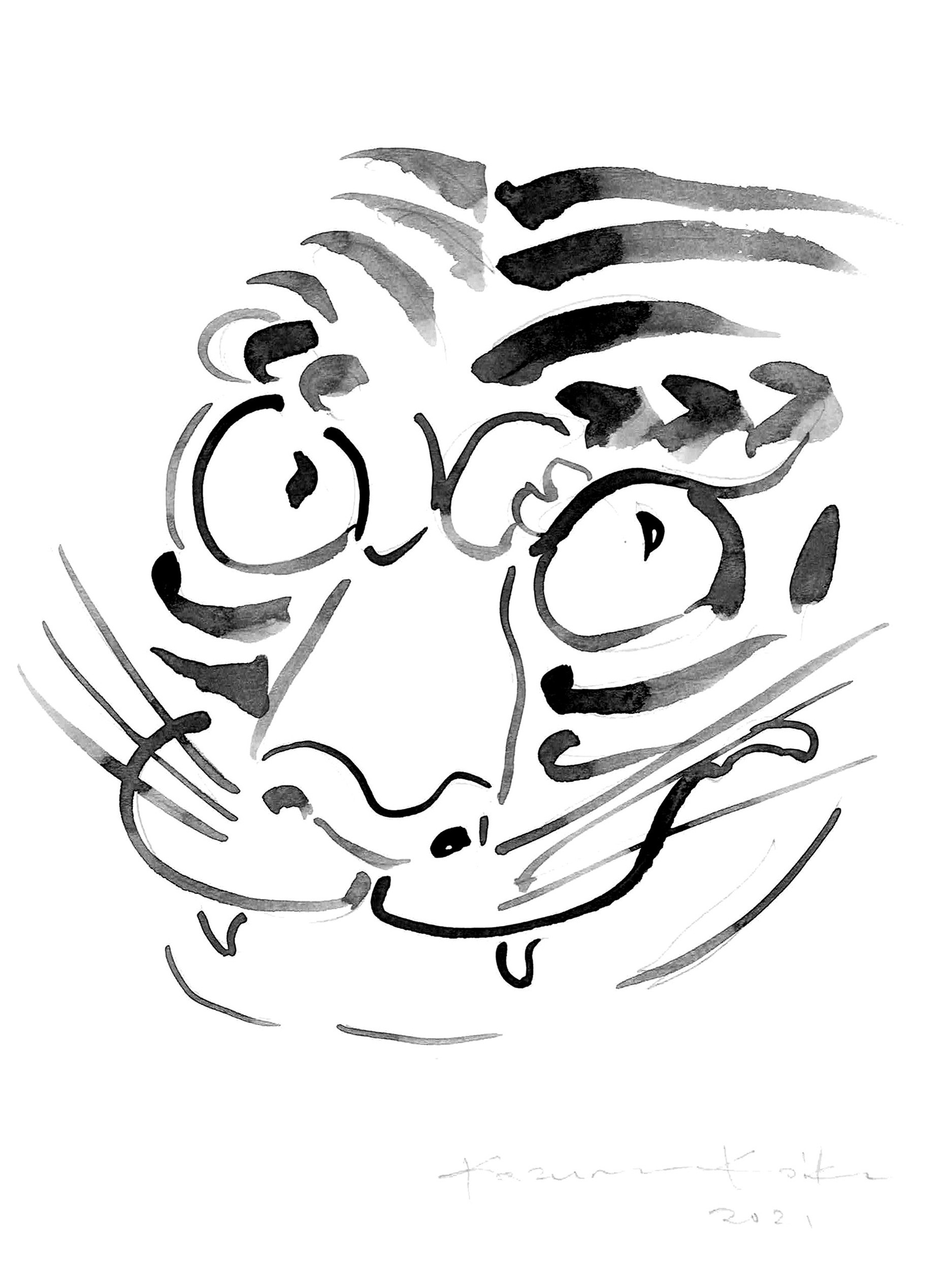
Untitled, 2021, water color and pencil on paper, 24,4 × 17,2 cm, courtesy Kazuma Koike
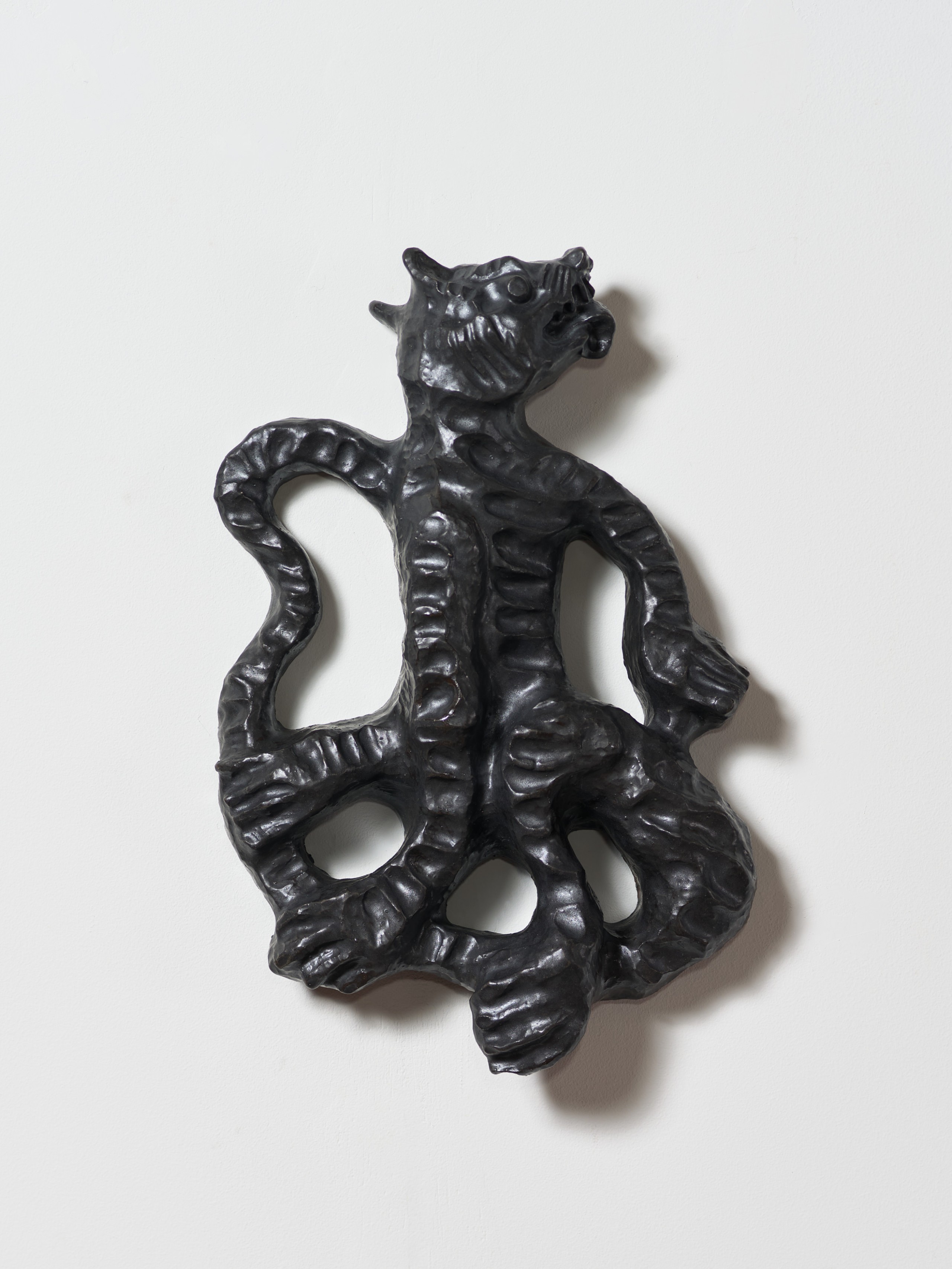
BC201107, 2020, ceramic, 37,5 × 24 × 7 cm (relief), ceramic sculptures and installation views at Omuro Museum. Photo credits: Hayato Wakabayashi, courtesy of Kazuma Koike
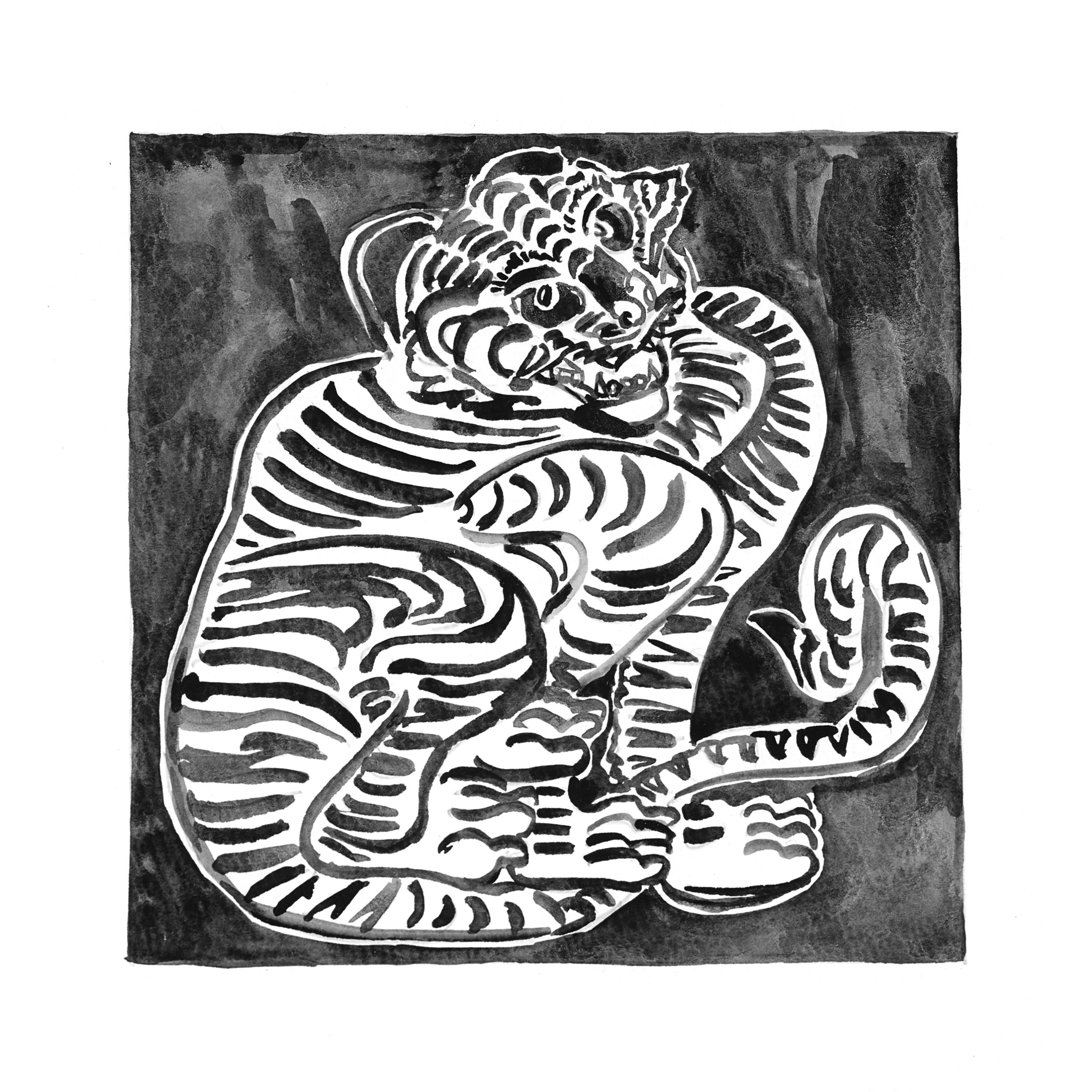
Untitled, 2020, water color and pencil on paper, 18 × 18 cm, courtesy Kazuma Koike
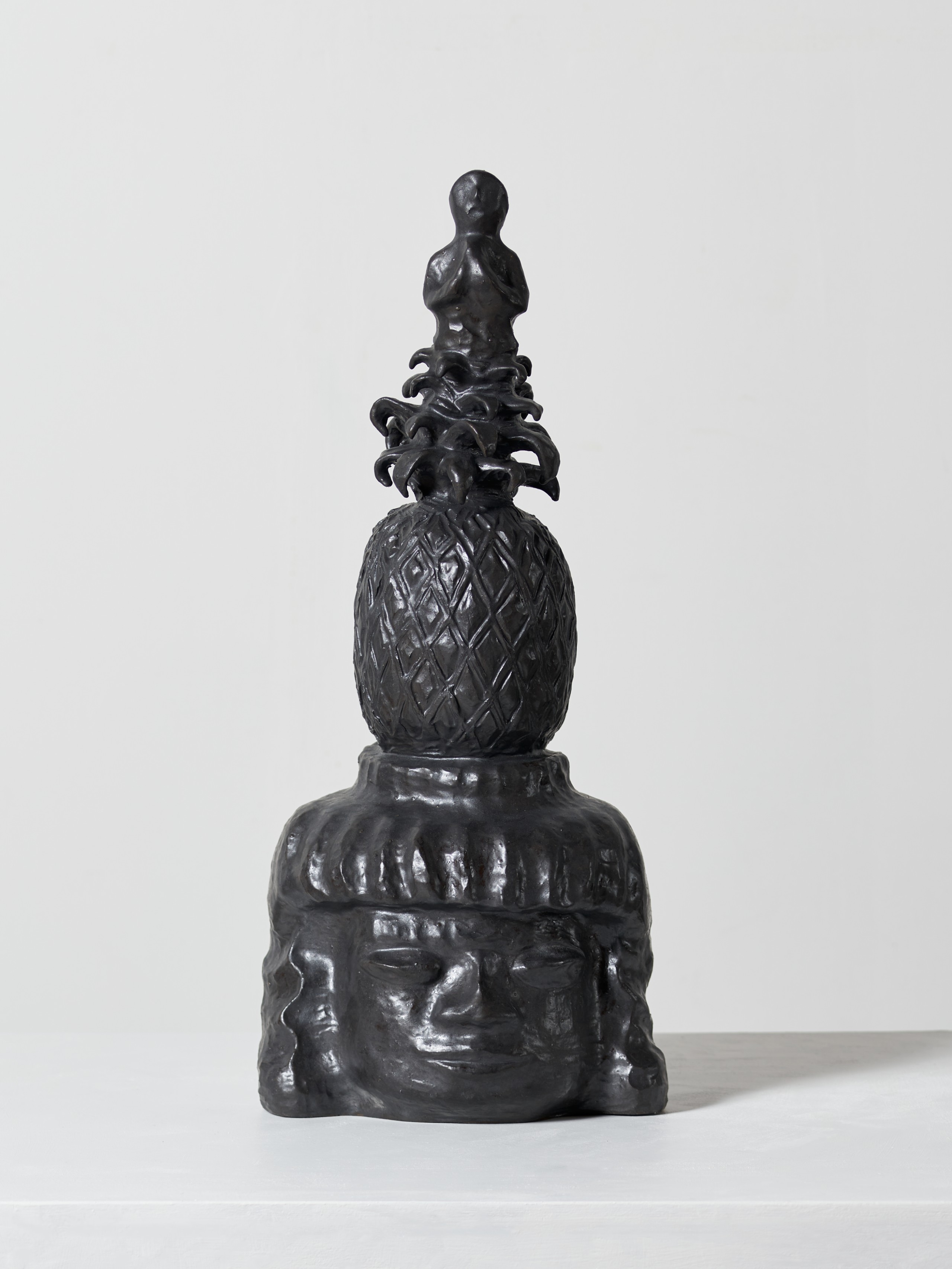
“BC201112”, 2020, ceramic, 53 × 23 × 20 cm, ceramic sculptures and installation views at Omuro Museum, photo credits: Hayato Wakabayashi, courtesy of Kazuma Koike
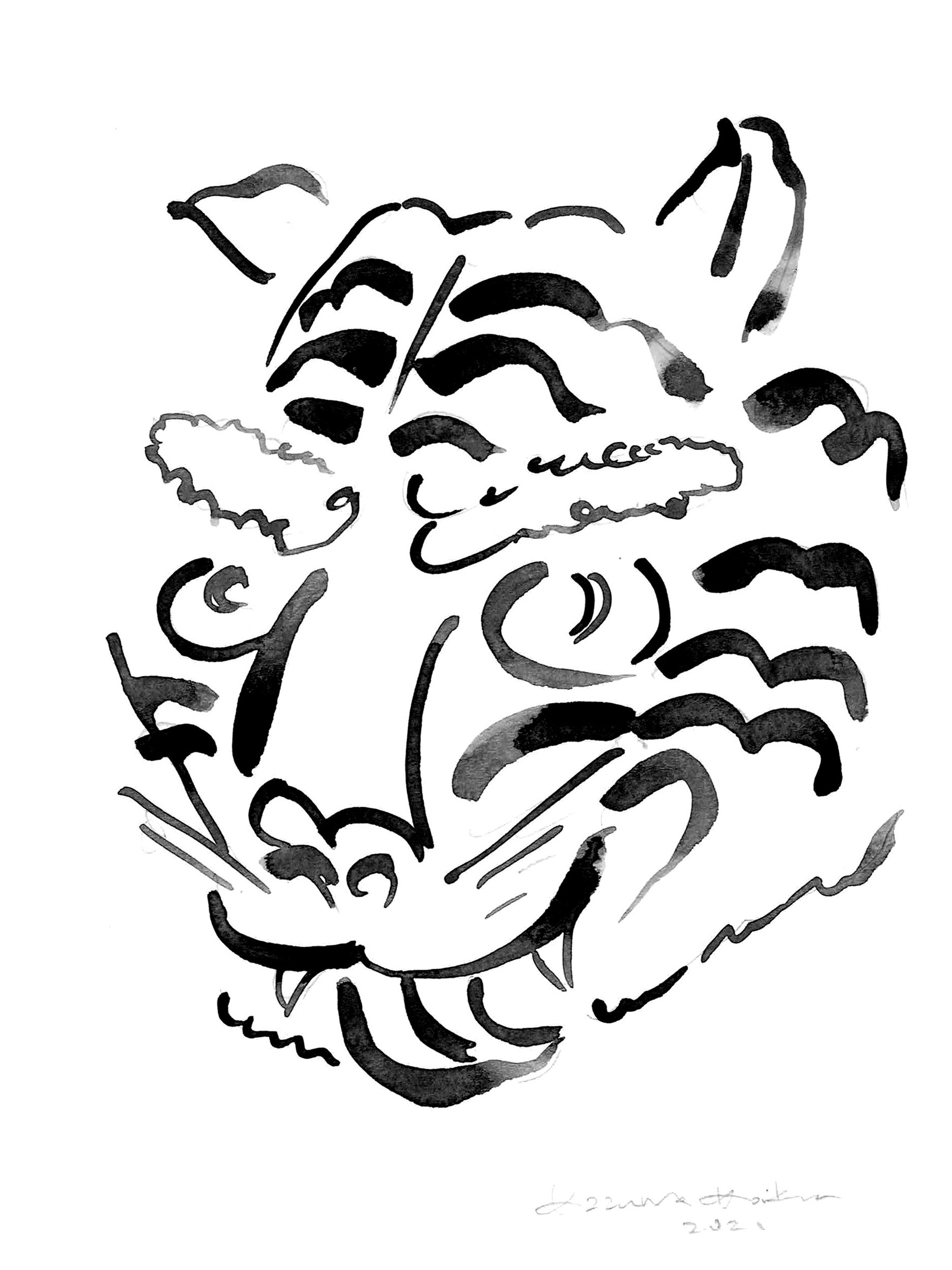
Untitled, 2021, water color and pencil on paper, 24,4 × 17,2 cm, courtesy Kazuma Koike.
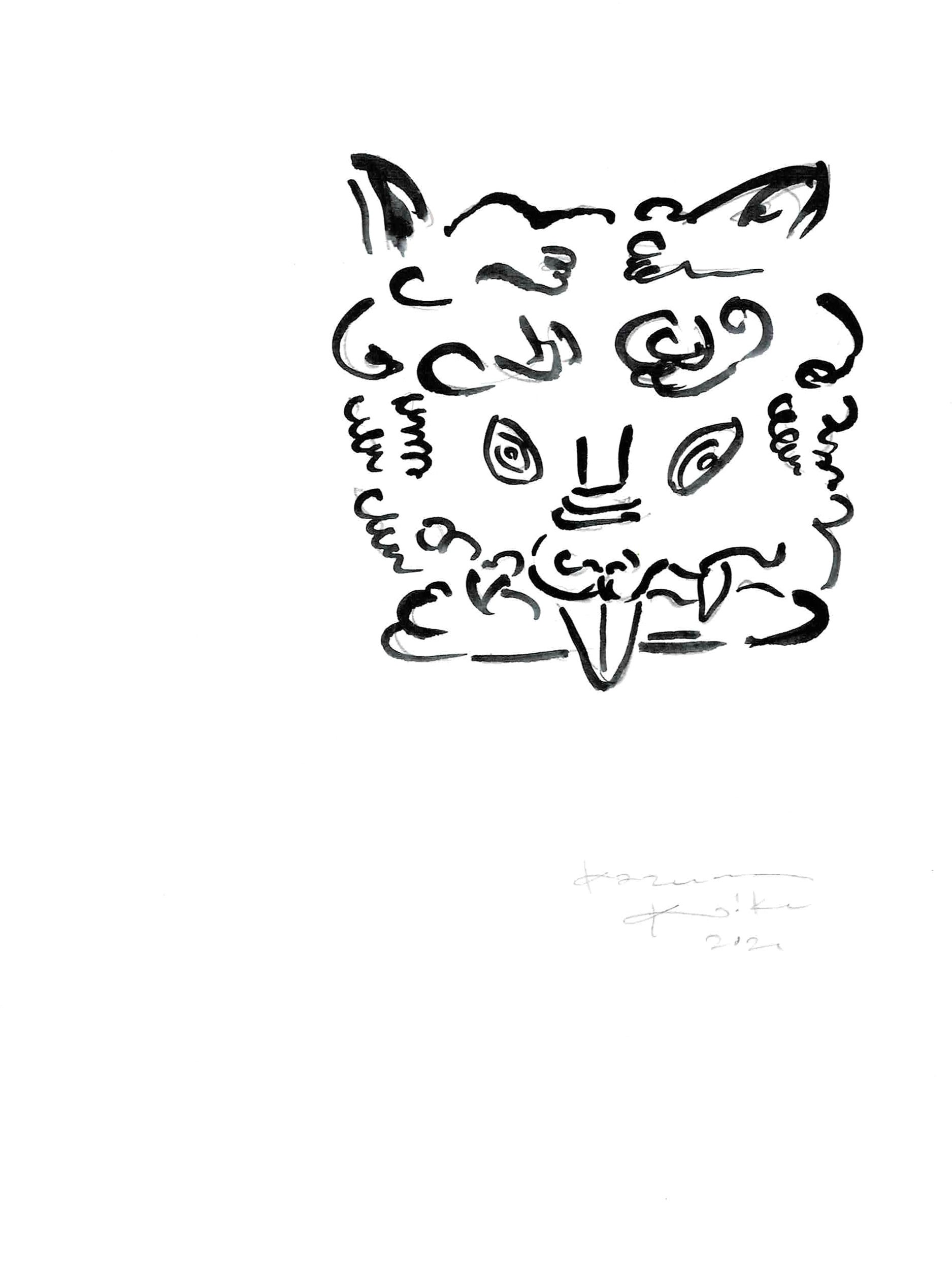
Untitled, 2021, water color and pencil on paper, 24,4 × 17,2 cm, courtesy Kazuma Koike
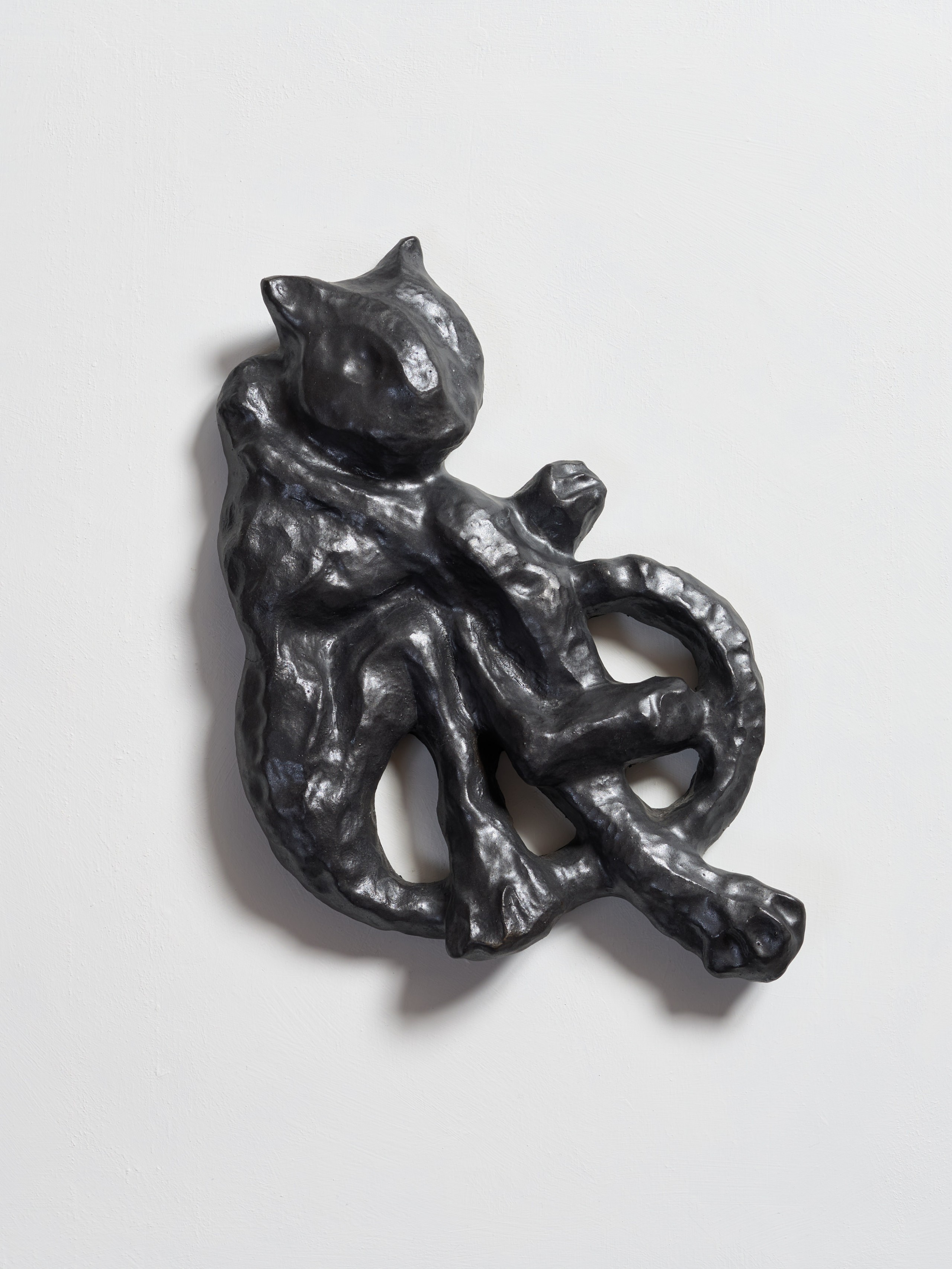
BC201206, 2020, ceramic, 6 × 39,5 × 24 cm, ceramic sculptures and installation views at Omuro Museum, photo credits: Hayato Wakabayashi, courtesy of Kazuma Koike
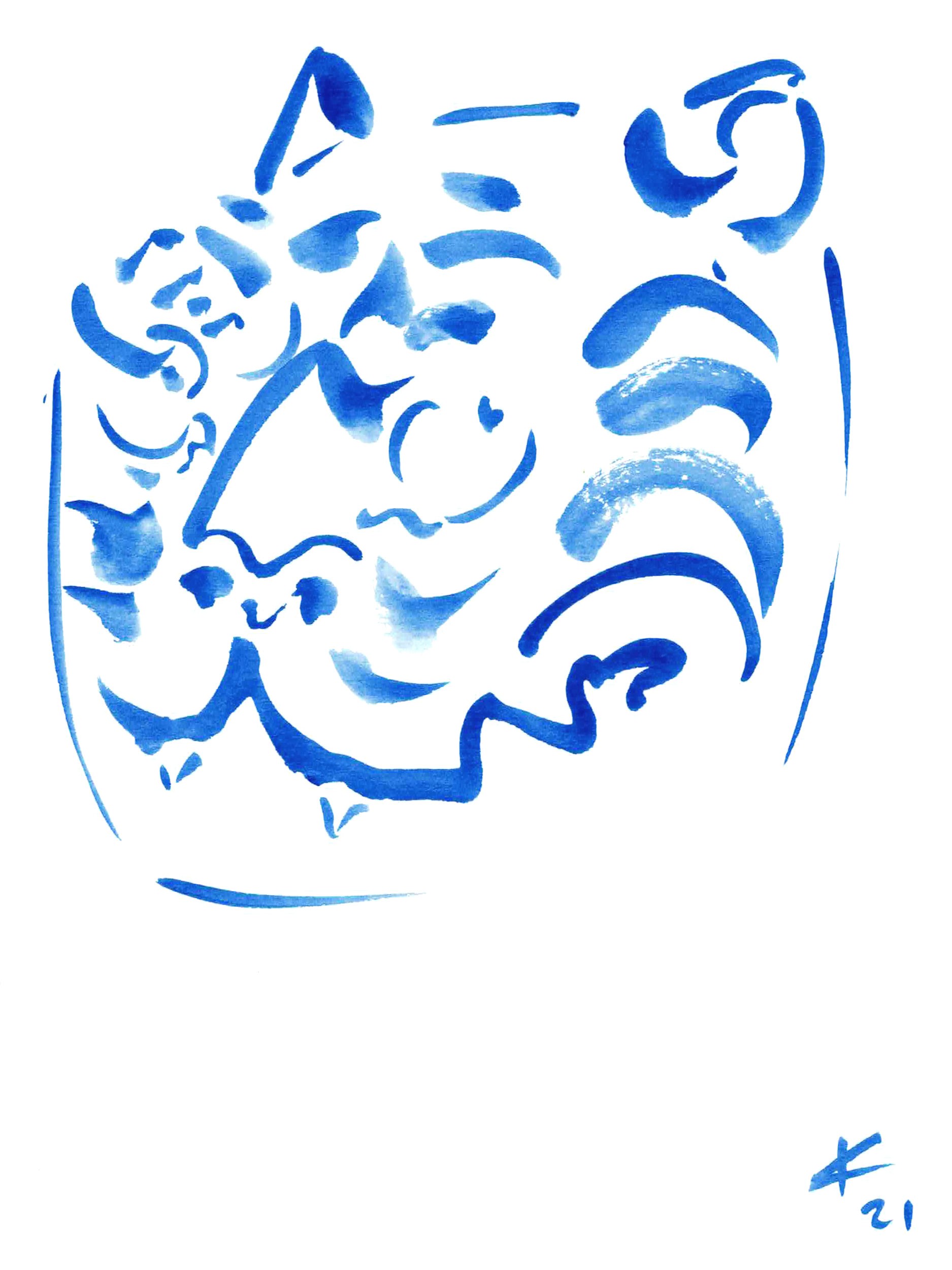
Untitled, 2021, water color and pencil on paper, 24,2 × 16,6 cm, courtesy Kazuma Koike
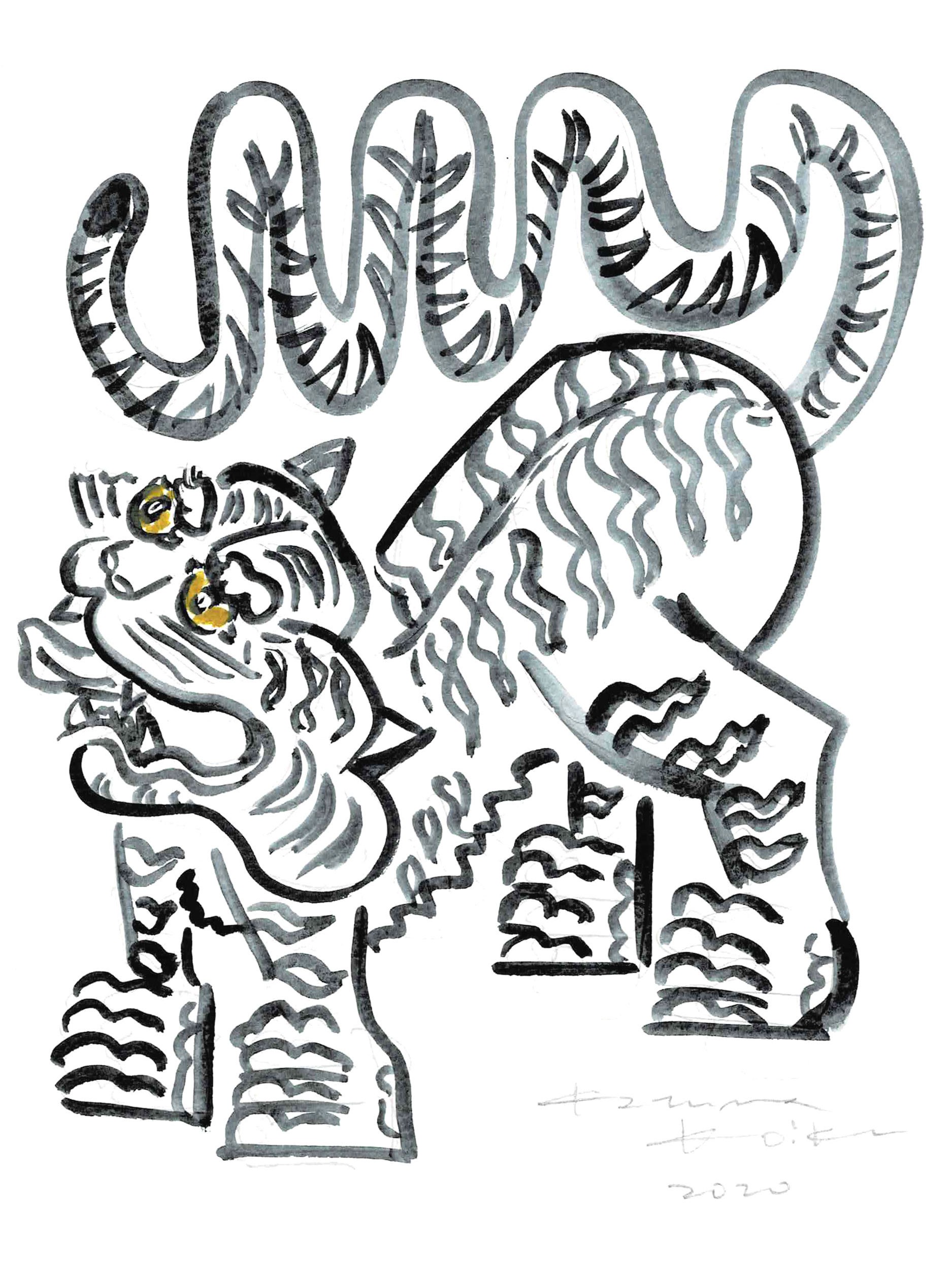
Untitled, 2020, water color and pencil on paper, 22,3 × 17,1 cm, courtesy Kazuma Koike
“Many painters have drawn tigers in the Edo period but there was no tiger in Japan at that time. Amazing tiger paintings of this period were made with reference to chinese paintings, furs brought back and cats. This resulted in the drawing of very special tigers as imaginary creatures. When I draw animals, I always try to make animals which do not exist. Something in between animals and gods, maybe”.
You spent your childhood in Buenos Aires, Argentina and Japan, has this influenced your practice?
My childhood experience has been influencing a lot of my art works. Especially, being a stranger at a young age created my basic imagination. I feel nostalgic when I read books by García Márquez.
Being a stranger influenced your work?
Many art lovers who are interested in what I create have said my works are not alike to other Japanese artists and they consented when I explained I spent almost 10 years in abroad. Probably I am not much opposed to mix things from different cultures because of that childhood. I am also interested in crossbreeding and Shinbutsu-Shugo (mix between Shintoism and Buddhism).
What do you consider as influences-references?
I often try to study forms of nature from plants and forms of random from thickets. Japanese old masters, I like Shohaku (曾我蕭⽩ and Enku (円空). In my 20s I spent lot of time visiting temples to see the buildings, gardens and sculptures. That also influenced me a lot. I prefer to make installations which have strong frontality.
Where will does your work get its roots?
Since I was little, I loved going to museums. I was thrilled by the bones of dinosaurs, old vases and sculptures. It’s still the same.
Do you put them on the same level?
I had an idea that if aliens or intellectual life form finds a huge size museum like the British Museum or the Metropolitan Museum after the destruction of mankind, they will see lots of artifacts which have different roots, from one place. I don’t know why I love them but I love things that have a presence.
It seems that your work is a bridge between two worlds, real and fictional?
My artworks are created by mixing images from different places/periods and made as “fictional ancient artifacts”. I am interest-ed in forgery or misinterpretation which change the purpose and meaning of things unintentionally.
Would it be like a work whose attribution would be false, for example a work found that would not be signed and that would be a sort of in-between?
Yes, kind of. It is difficult to explain but I want make artworks that were not made by someone specific or that have existed before I make. I am not trying to create a story. I am interested in the system of birth of a relationship.
I often put things which I did not make like stones, plants and woods. I use them in my exhibition to make tensions not to create a story. The tensions are made from relationships between things and things. I think if the installation succeeded in having complicated tensions, that can bend the space and time. Probably, what I am trying to do is to make things that do not belong anywhere. Then the works will have float feelings.
What is your working routine?
Take a time to look at the work in progress before moving my hands.
How did you work? Can you tell me about the specific clay you use?
Before starting to make new works, I often do sketches or prepare photos. But everytime I try to invite unexpectedness to my work. I leave some space for change in production. I want my works to be like found objects and unexpectedness often affects as erasing intention. I think ceramic is a good material for that idea because I can not control them perfectly. I use black clay and special black glaze which has an effect like old Japanese tea bowls. I like the idea to make all of them in black even though they were made from different motifs.
How is your work evolving?
I am planning more large-scale installations.But basically I want to keep on doing what I am doing today.
How do you title your artworks?
BC means Black Ceramic and the numbers are yymmdd the date finished modeling. The idea came from old sculptures which have numbers written on by the finders. The purpose is the same as the idea to make all of them in black. It is maybe a forcible harmony.
Your canvas shows that you make some textured paintings, as a sculptor working on a 2D canvas. Do you have a need for volume, work on the material?
I started the textured painting series in 2009. I stopped making them for a few years but recently started again. The idea came from Sand mandala, old tapestries and mosaic floors. I thought an image made by a gathering of small color parts could have some kind of vibration. It really takes time to finish this painting. Need to serve a small grain of paint one by one. This process is like the growth of a plant.
What do you think about working with bronze?
Since I started making sculptures, I have touched many different materials but bronze was always a special material to me. Because my hero artists such as Barry Flanagan, Kiki Smith and Pablo Picasso used that material. So I am very happy to have this opportunity and hope to make bigger ones in near future. Bronze is an attractive material because of it’s texture but also it is a material of the history of sculpture.
Movie references?
The Days of Eclipse. Tie Xi Qu: West of Tracks. Apocalypse Now. Naked Lunch.
Music references?
Ornette Coleman. Chet Baker. Thelonious Monk. Gustav Mahler. Eric Dolphy. Herbie Nichols. Samson François. Marc Ribot. Elvin Jones.
Art references?
Tokyo National Museum. Matthew Barney’s The Cremaster Cycle. Dia:Beacon. Barry Flanagan. Anthony Caro. Bourdelle Museum. Pierre Huyghe at Museum Ludwig. Shohaku (曾我蕭白). Enku (円空). Haniwa. Dogu.


